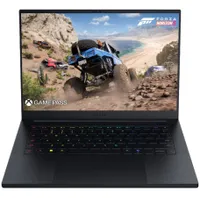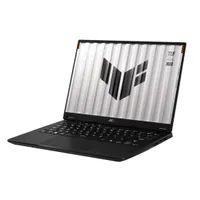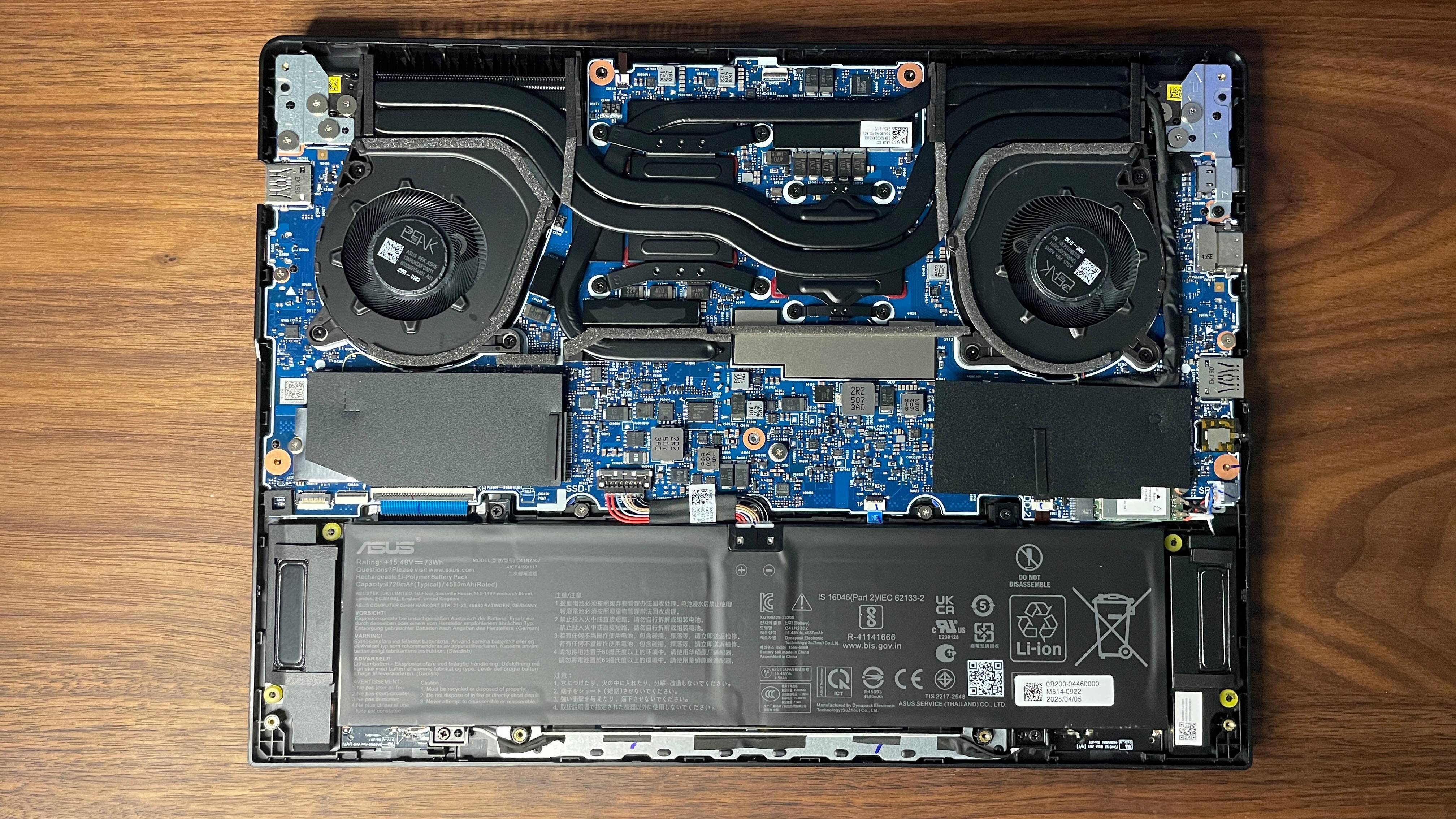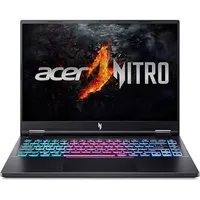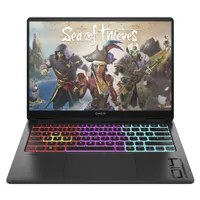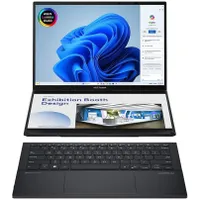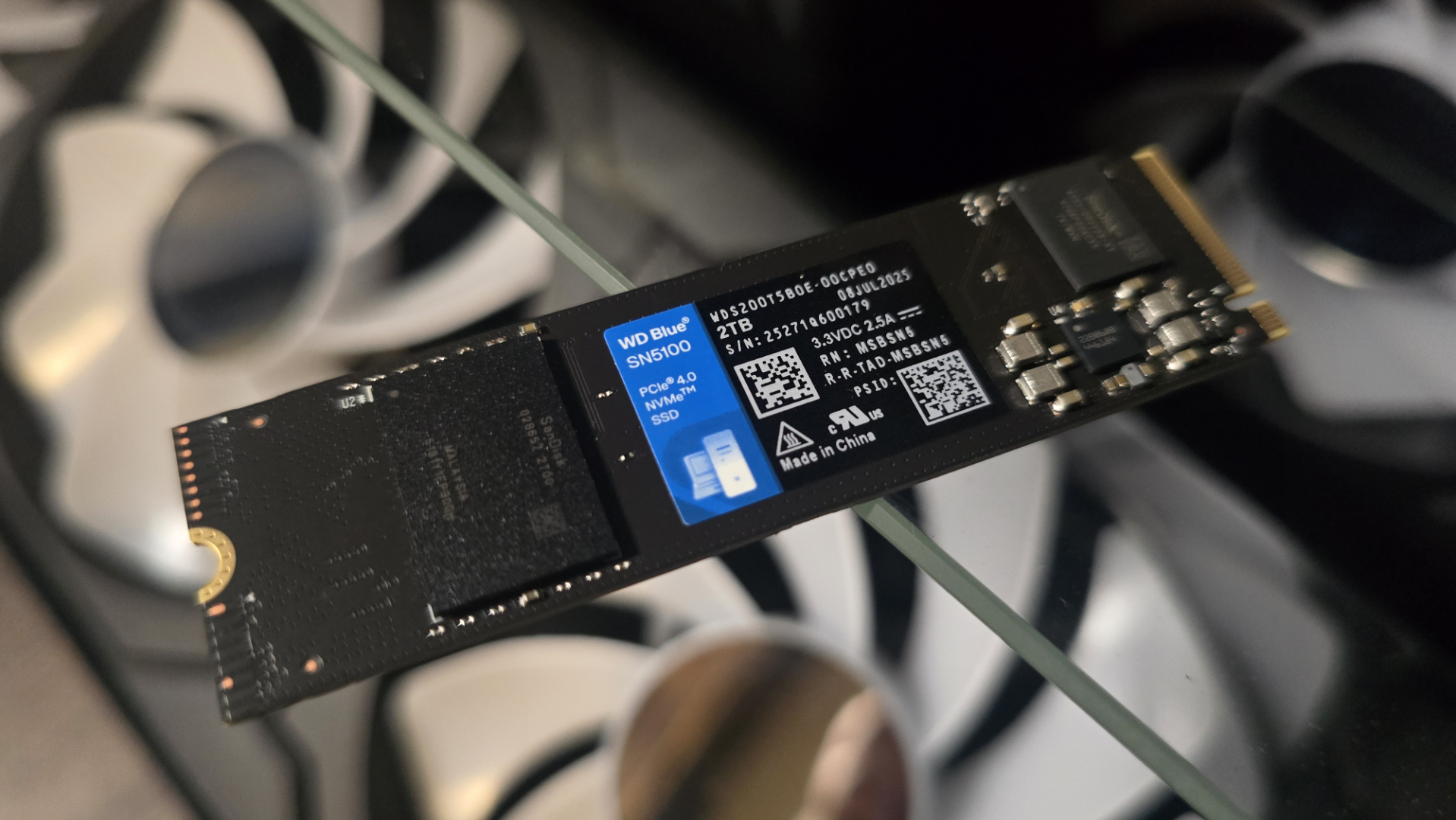Best 14-inch gaming laptop in 2025: The top compact gaming laptops I've held in these hands
The 14-inch form factor is the perfect nexus point between performance and portability.
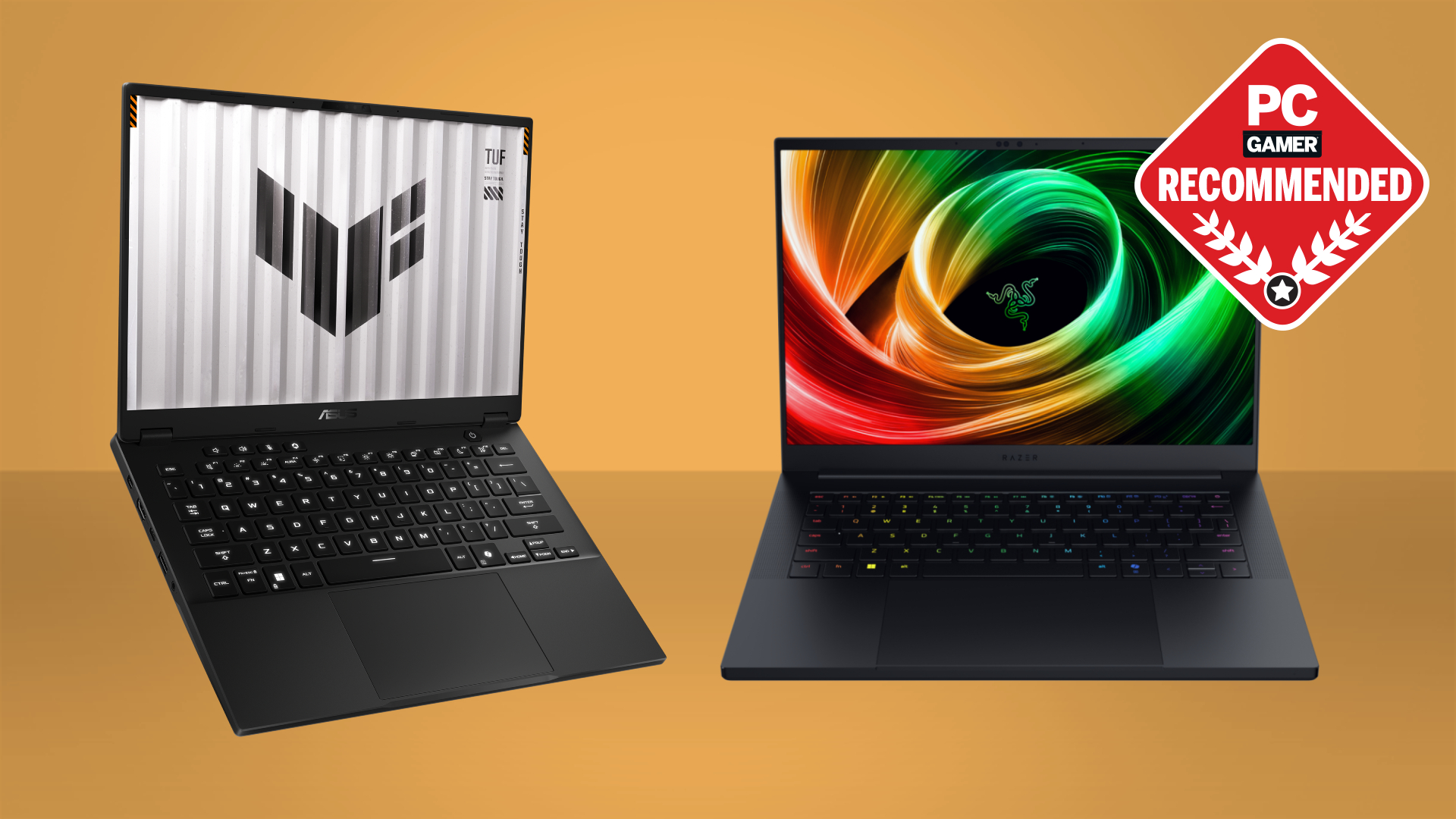
The best 14-inch gaming laptops represent the pinnacle of mobile gaming. Sure, your Steam Deck and ROG Ally X are great for certain games, and certain spaces, but if you truly want to take a gaming PC on the road then a gaming laptop is where it's at. And the absolute S Tier of the gaming laptop is the 14-inch form factor. Fight me.
The best gaming laptop guide will give you all sorts of options for your next lappy purchase, but that's for PC gamers in general. You and I, we know better, right? We know that 14-inch is where it's at. The 14-inch gaming laptop is the perfect fulcrum point for portability and performance, with the best models providing powerful GPUs, chonky-yet-efficient CPUs, and plenty of gaming grunt. And yet, you'll still have a laptop you can take around with you, use for office/school work on the go, and have the chops to play the latest games with ease. The best of both worlds? If you buy right, you bet.
So, which models should you spend your hard-earned cash on in 2025? Well, if you're looking for the very best overall, it has to be the Razer Blade 14 (2025), a gorgeous little OLED-equipped gaming machine that might not be the most powerful you can buy, but is easily the one you want anyway. And if the Blade's too expensive? The best value is most certainly the Asus TUF A14 (2025), which manages to kick like the proverbial mini-mule in a 14-inch form factor for a very reasonable price.
The Quick List
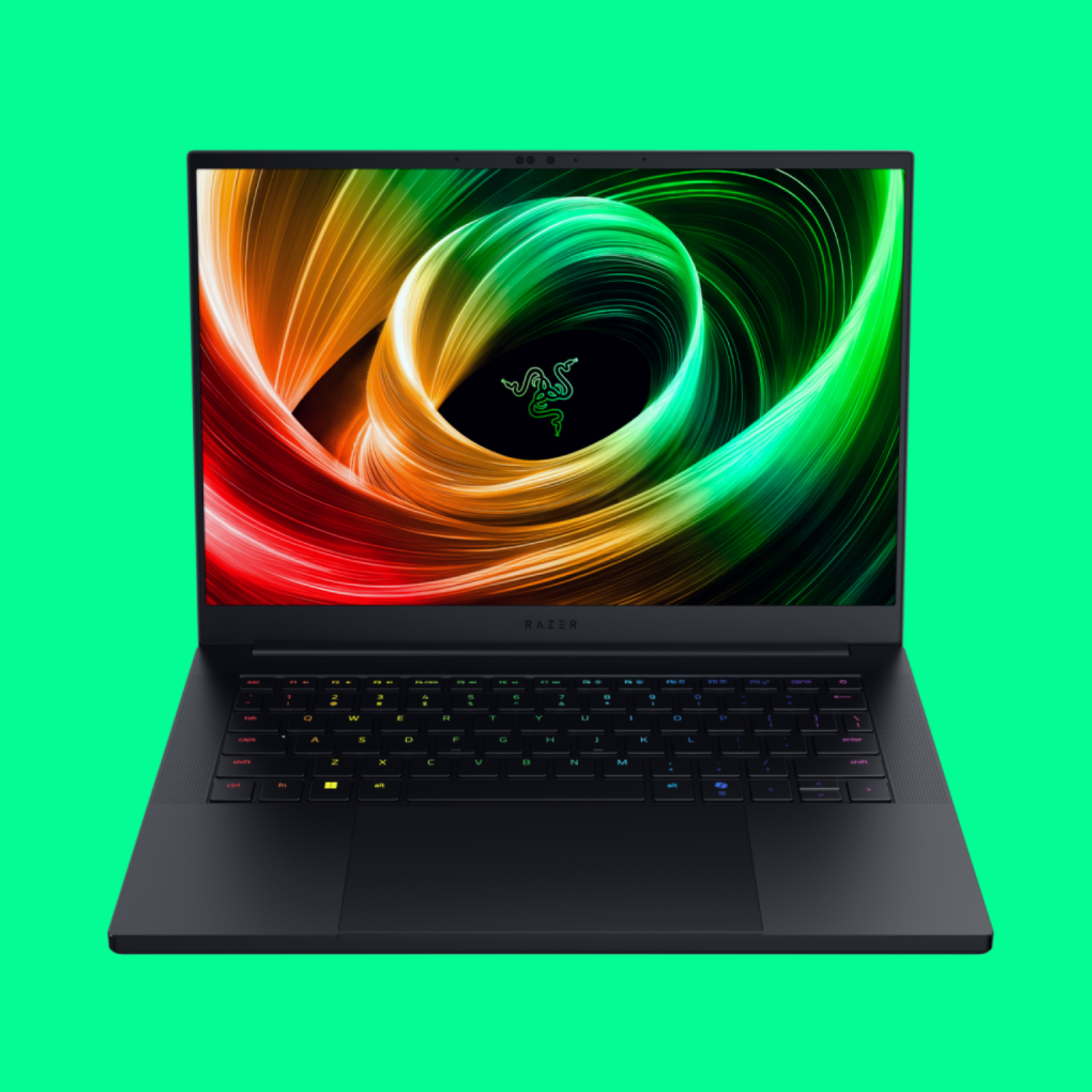
The best overall
Rarely has a gaming laptop captured our hearts like this one. It might not technically be the fastest 14-inch machine you can buy, but it's the super-refined, still very speedy laptop experience you want, and the one we'd buy with our own cash in 2025.
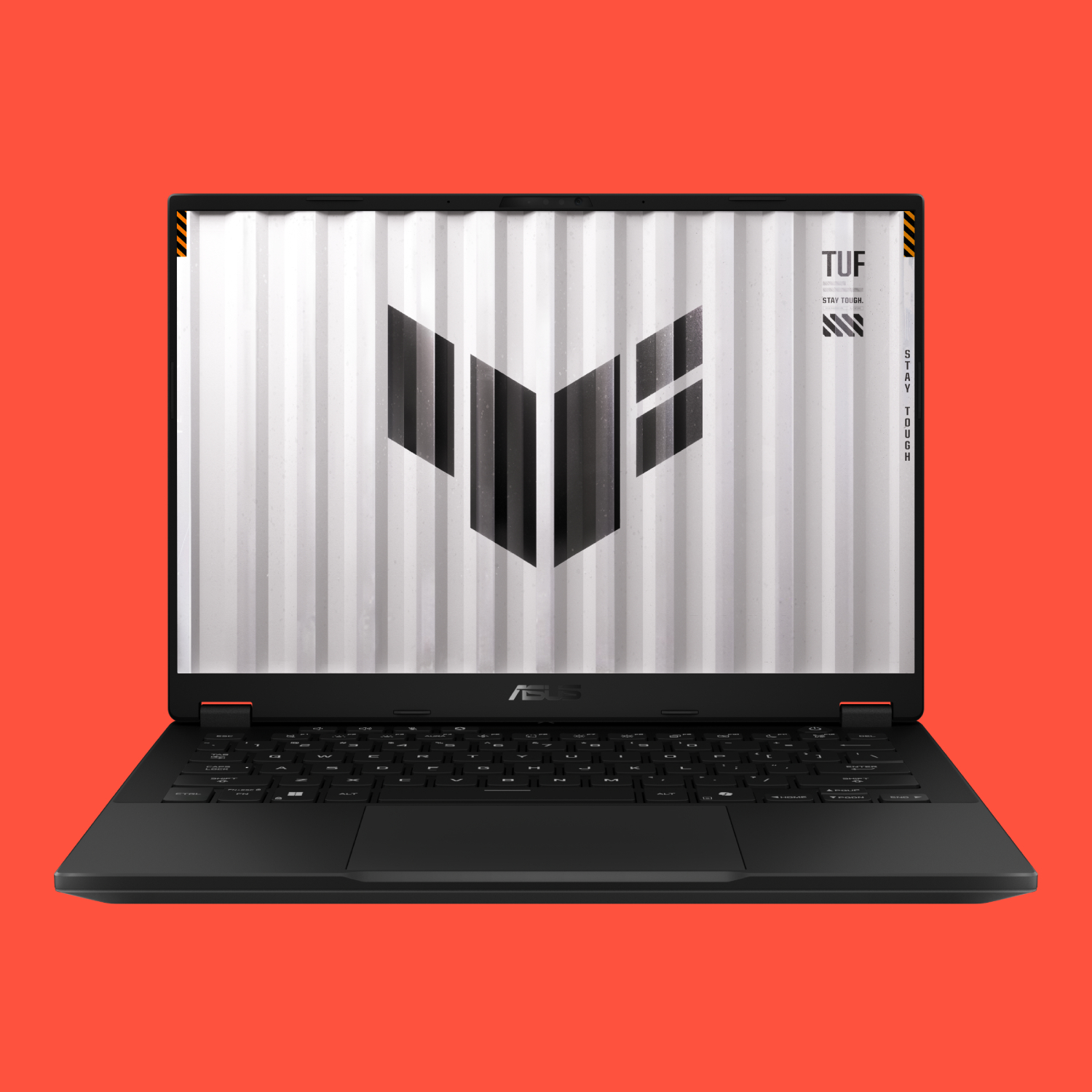
The best value
Asus has imbued the latest A15 with a tidy, well-appointed chassis, a good screen, and a 105 W RTX 5060 that's capable of delivering some surprisingly good gaming performance with some DLSS and MFG help. All for a reasonable price? Yep, that's value alright.
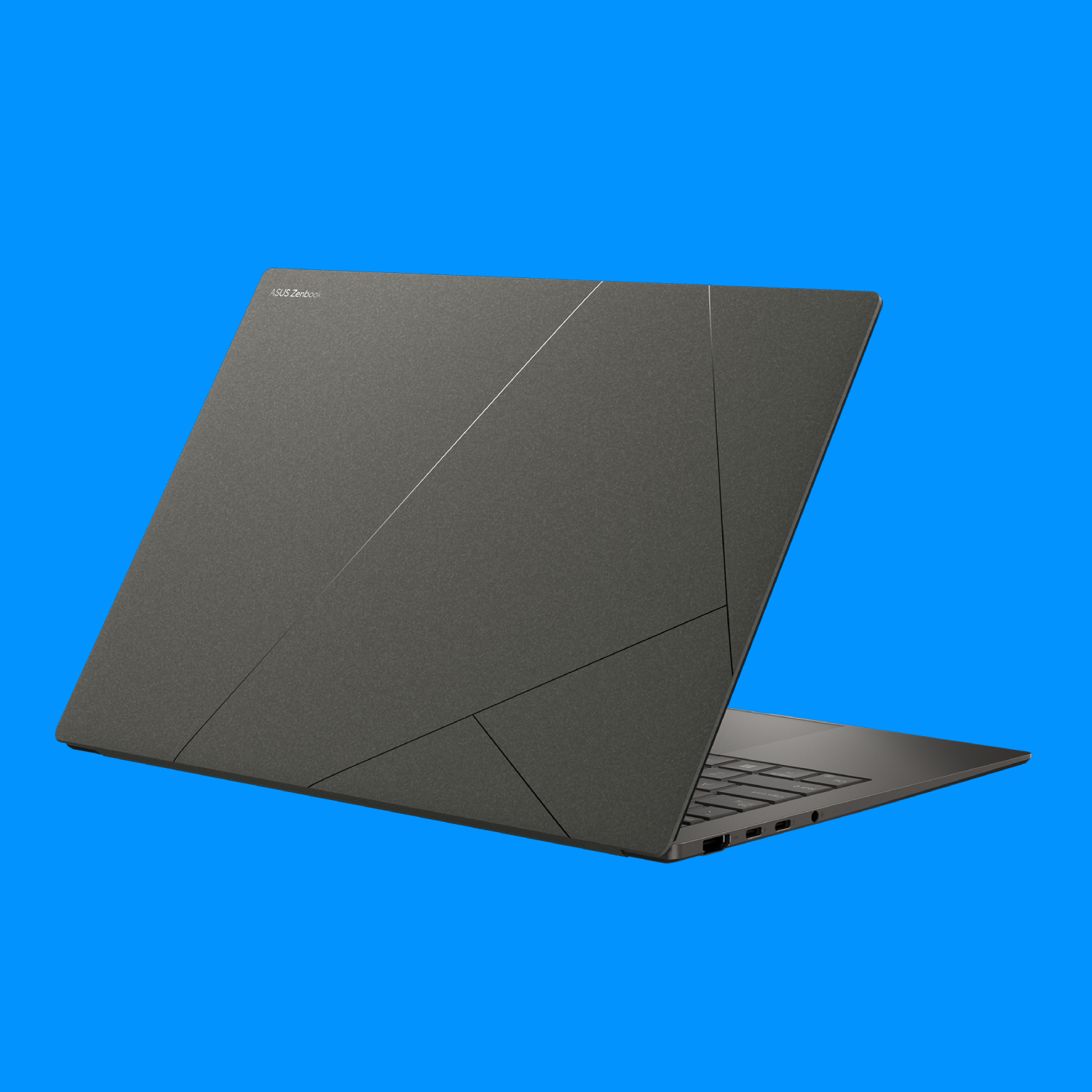
The best thin and light
If portability is paramount, then the impossibly-thin Zenbook S 14 is well worth considering. It's got an impressive iGPU that delivers handheld-like performance, which translates to some respectable light gaming figures as long as you don't push it with the demanding stuff. Don't expect miracles, though.

Dave has been testing PC gaming hardware professionally for the best part of twenty years. Back then a gaming laptop was the size of a briefcase, so you can probably see why he's been so keen to get his hands on every compact gaming-capable notebook of the past decade. He's been a 14-inch laptop Stan since he first got his hands on the original Gigabyte Aero and he's still going on about them.
August 26, 2025: to give this guide a thorough reworking. We've added the new Razer Blade 14 (2025) as the best 14-inch gaming laptop overall, the Asus TUF A14 (2025) as the best value, and the Asus Zenbook S 14 as the best thin and light. All new categories, all new copy, all new brilliant gaming laptops. Nice.
12 May 2025: to adjust one link, and to double check all of our recommendations below still represent the best 14-inch gaming laptops you can pick up right now.
13 February 2025: to include mention of the 50 series card launch, and check over all of our choices.
The best 14-inch gaming laptop
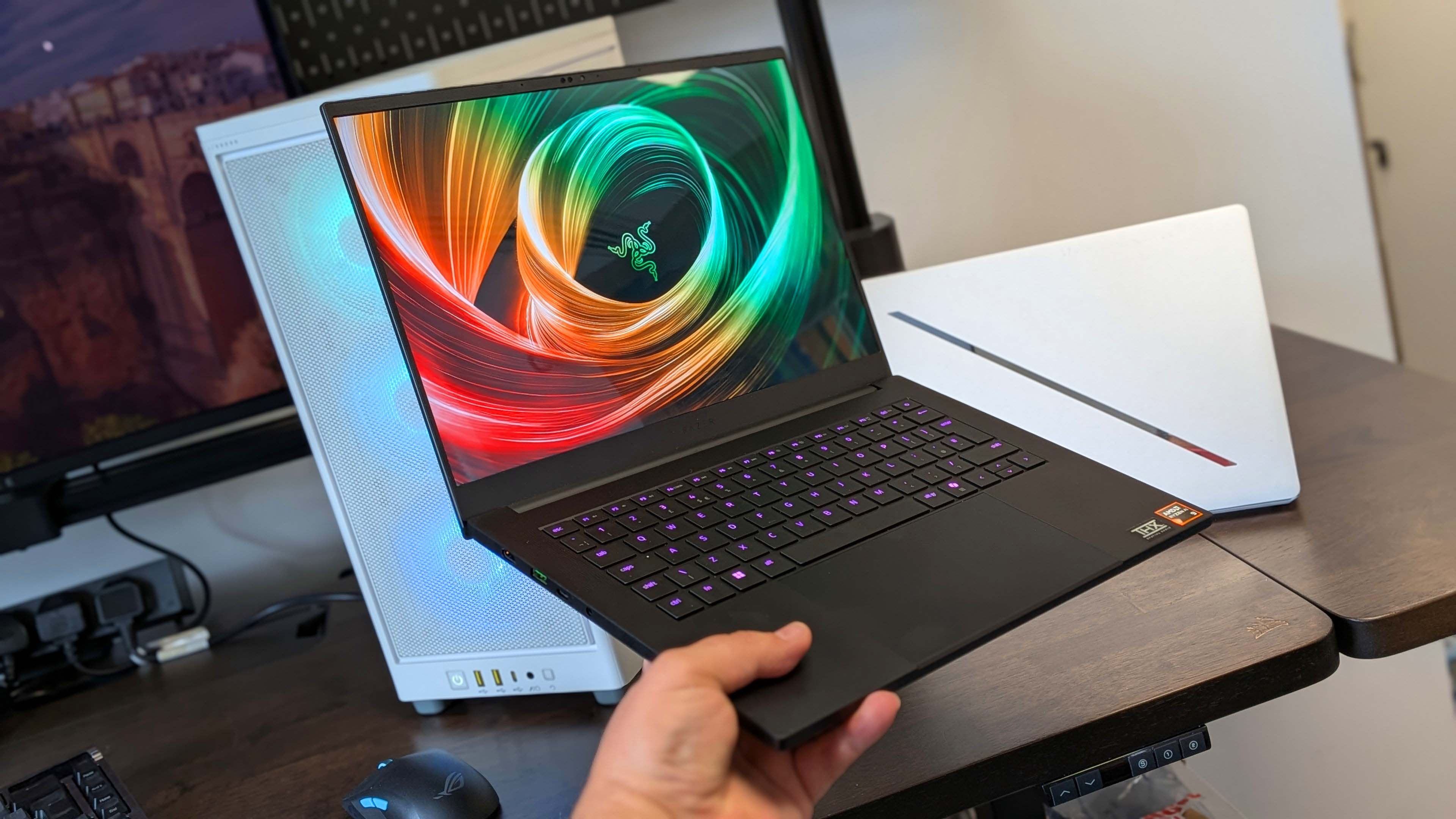
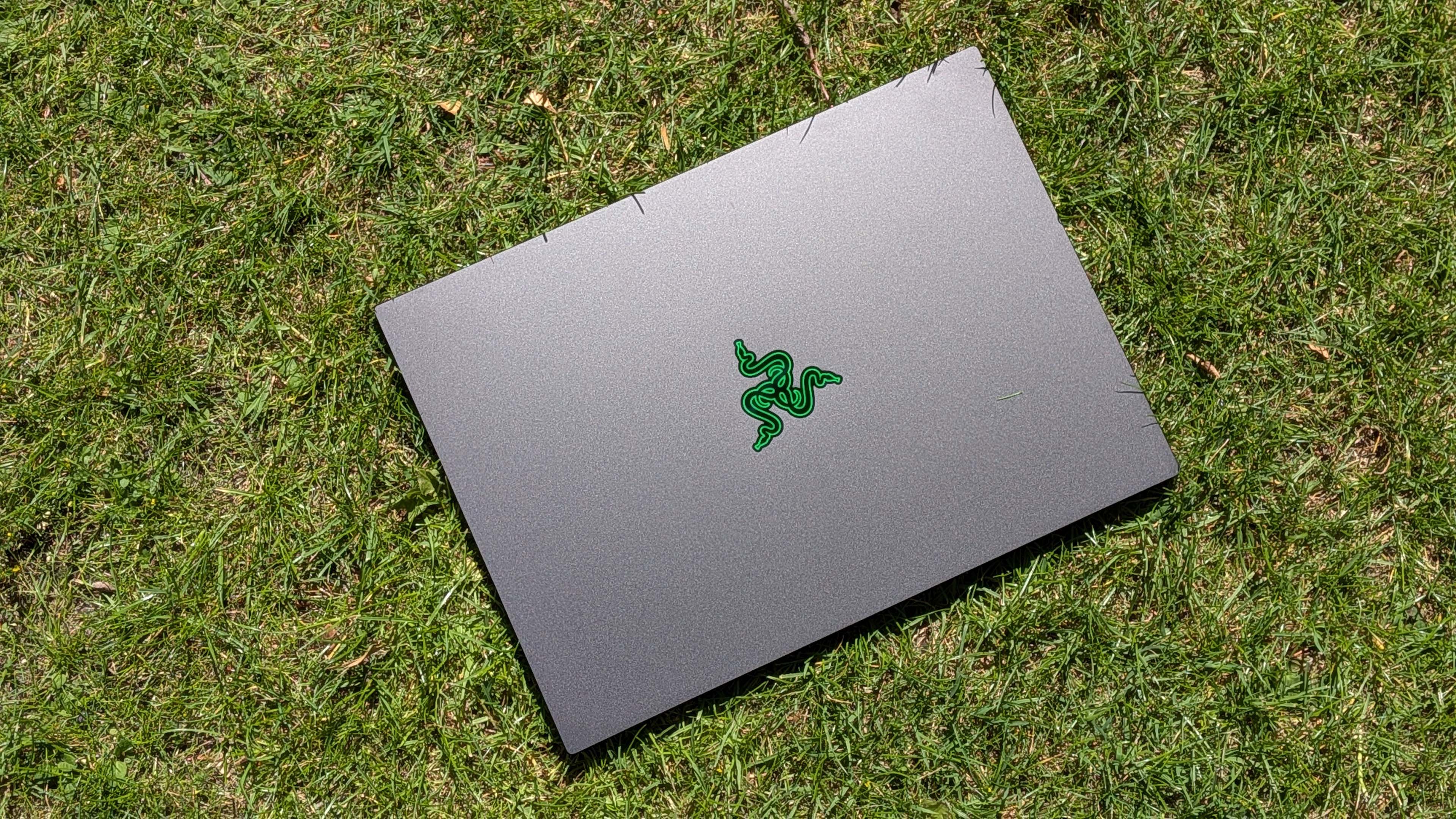
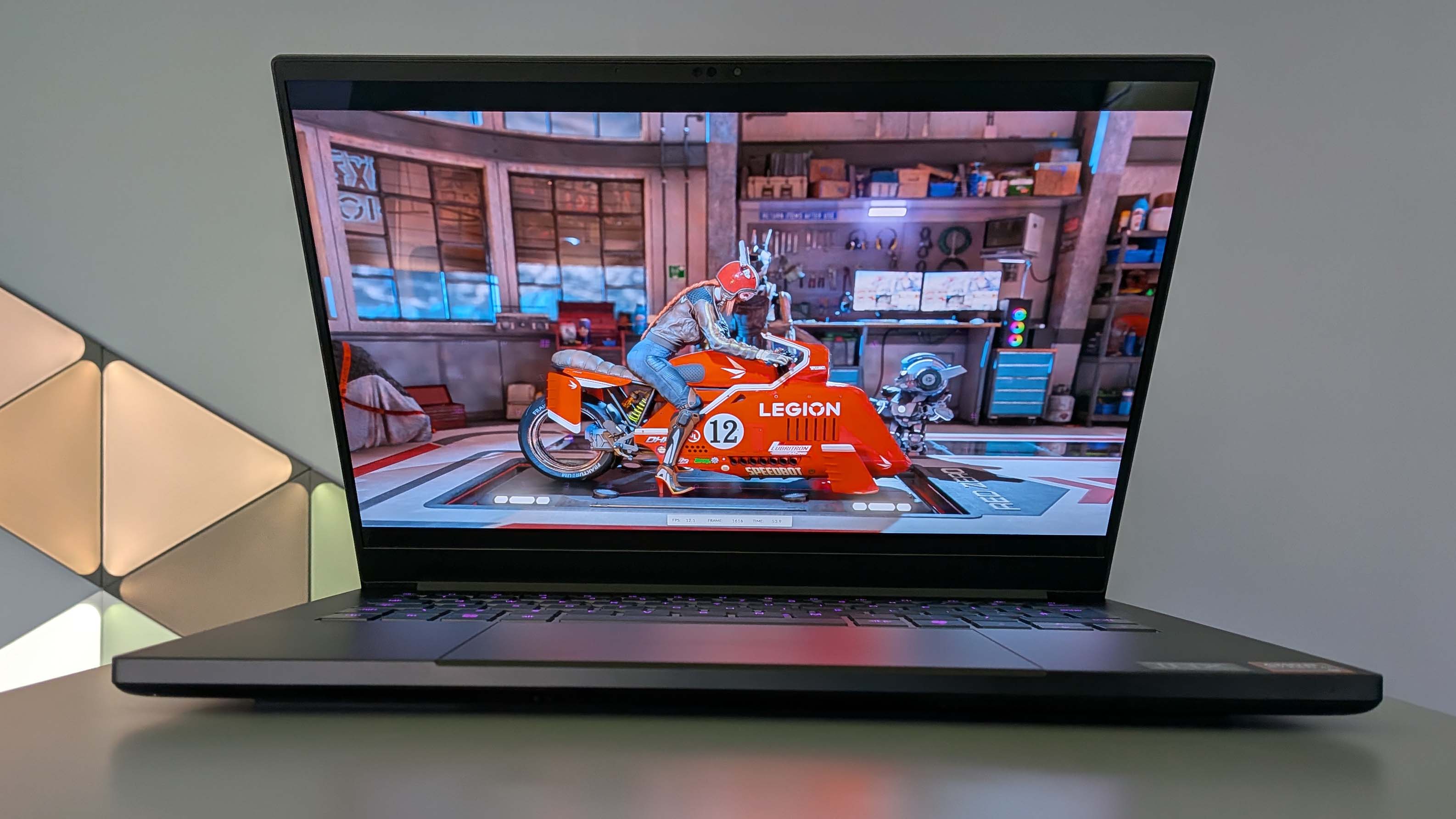
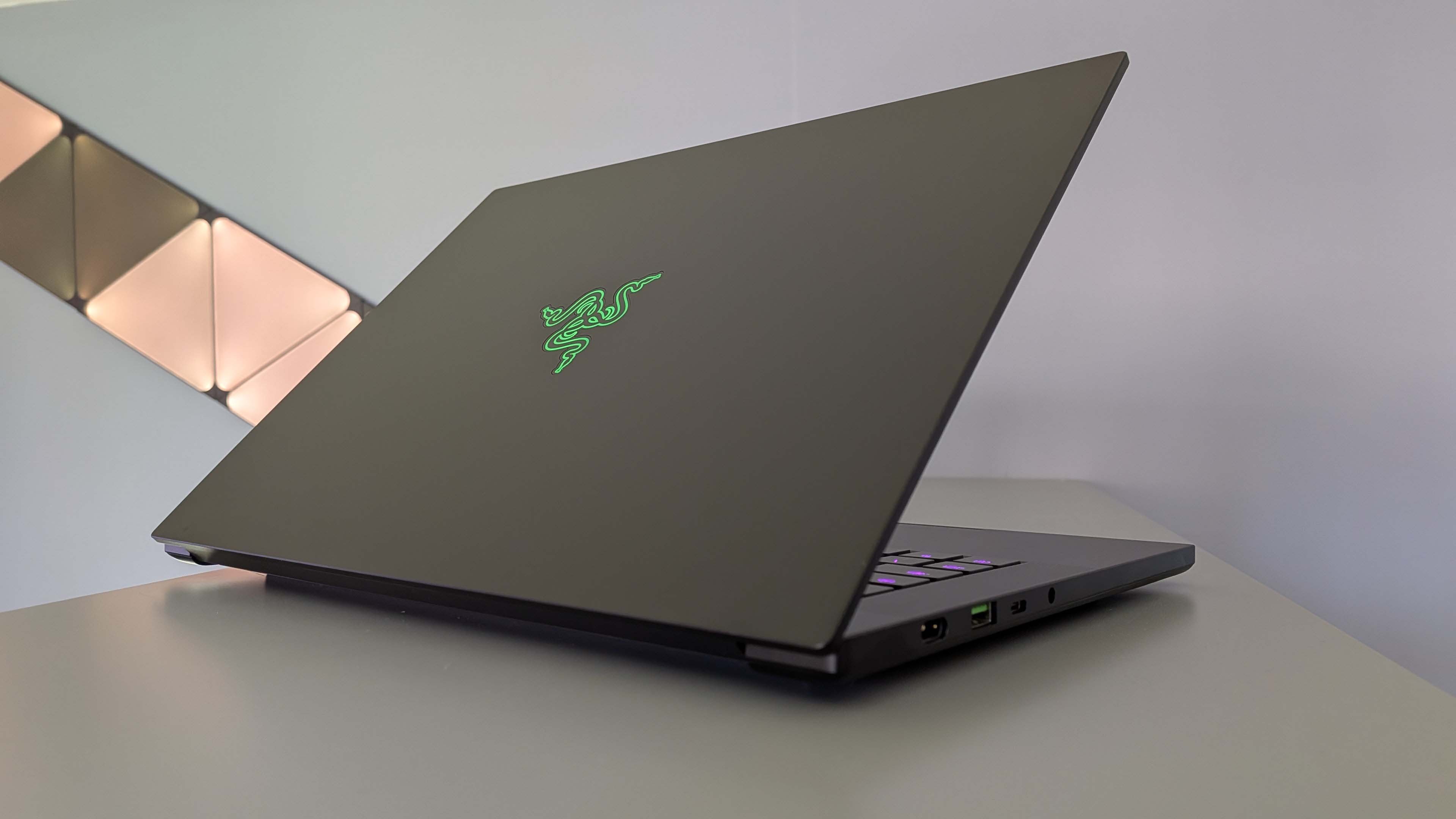
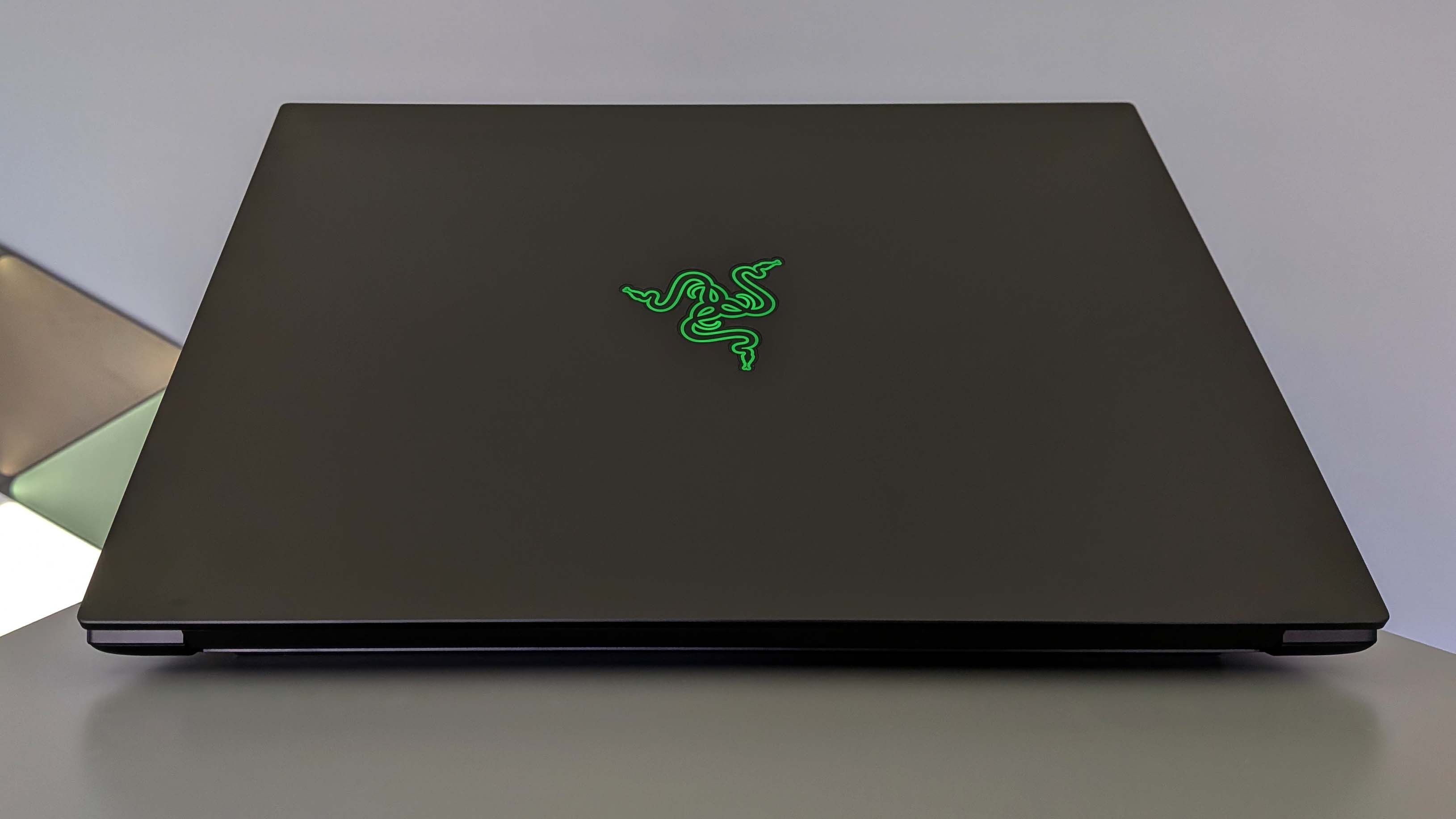
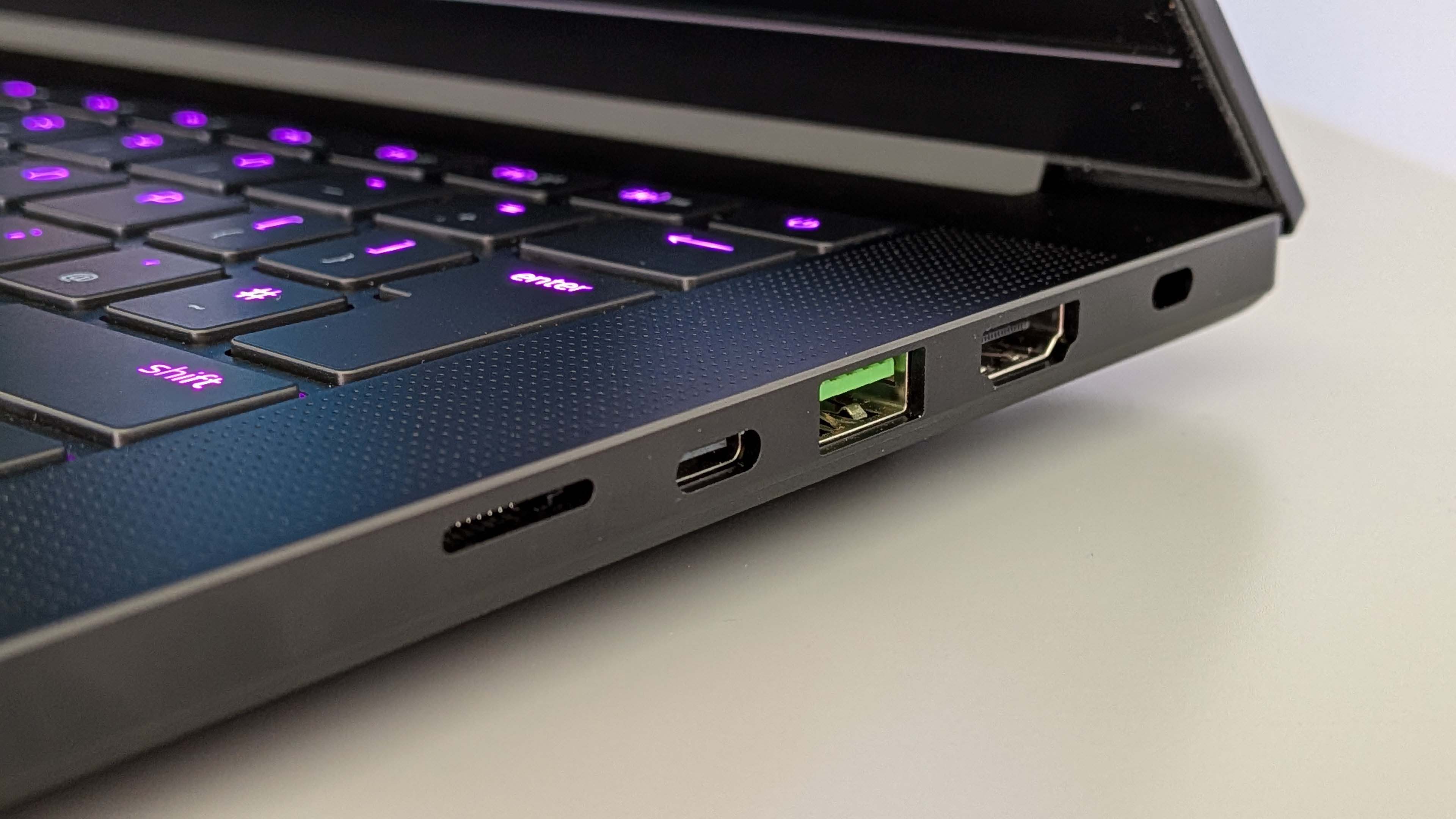
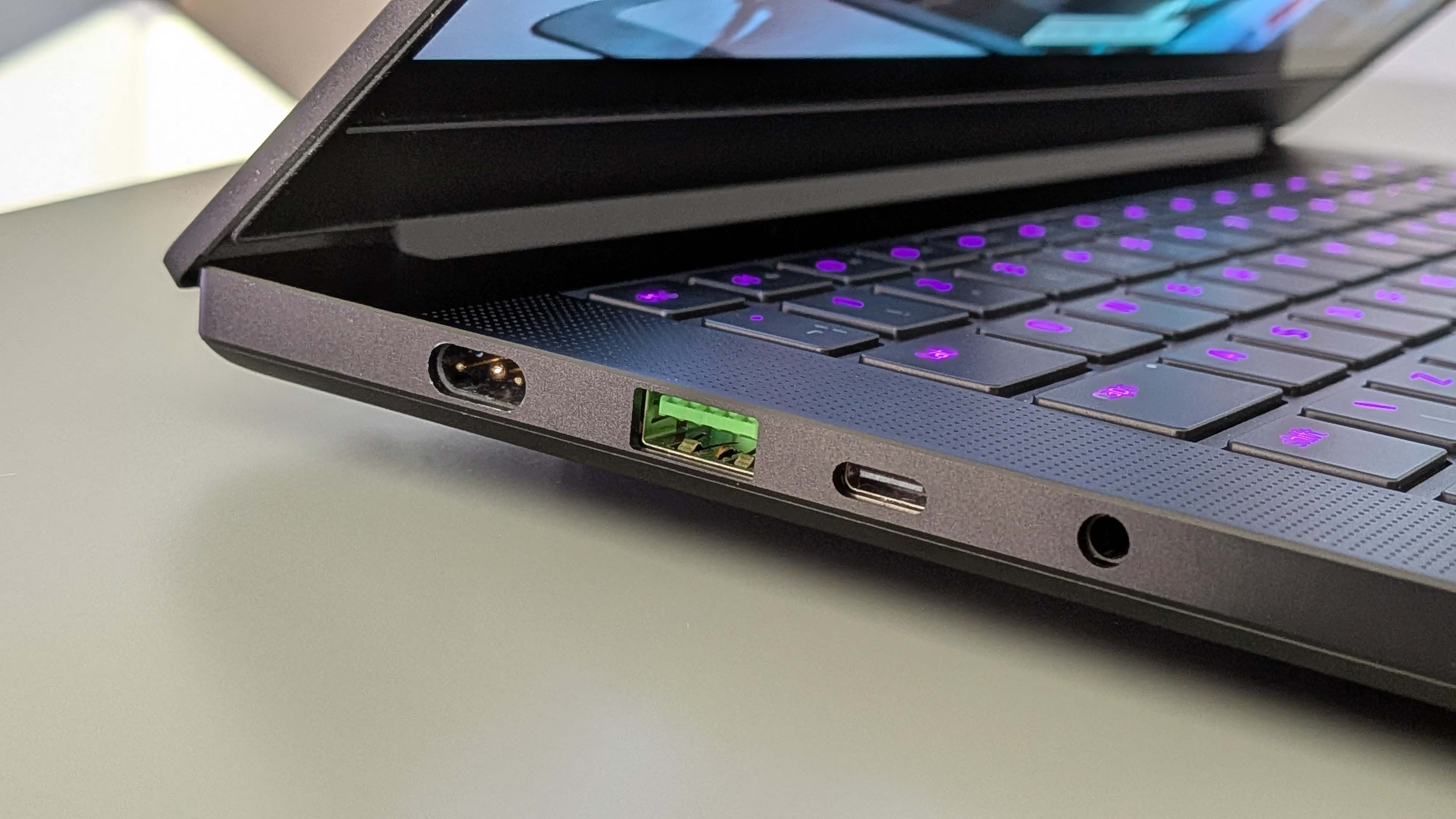
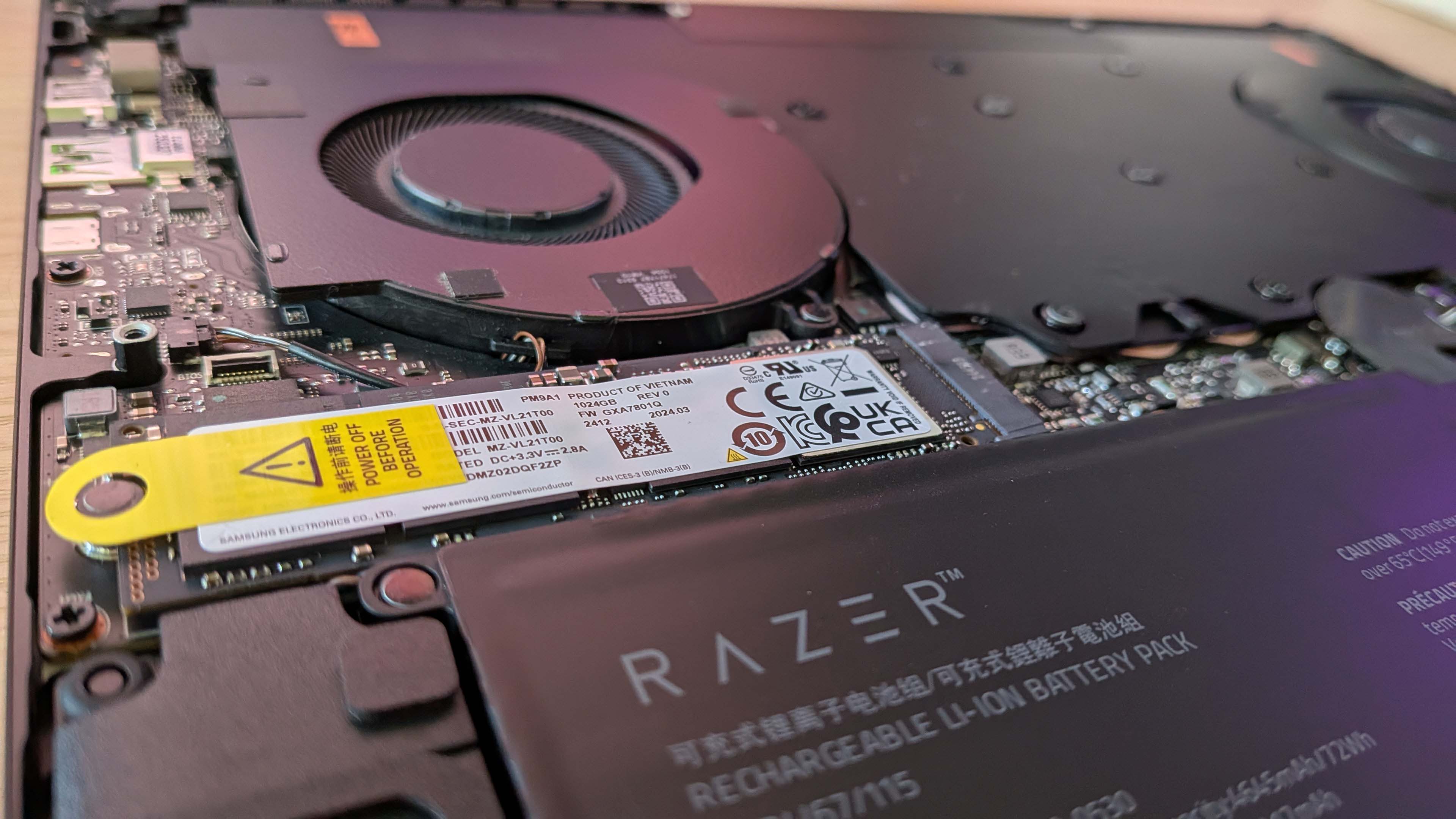
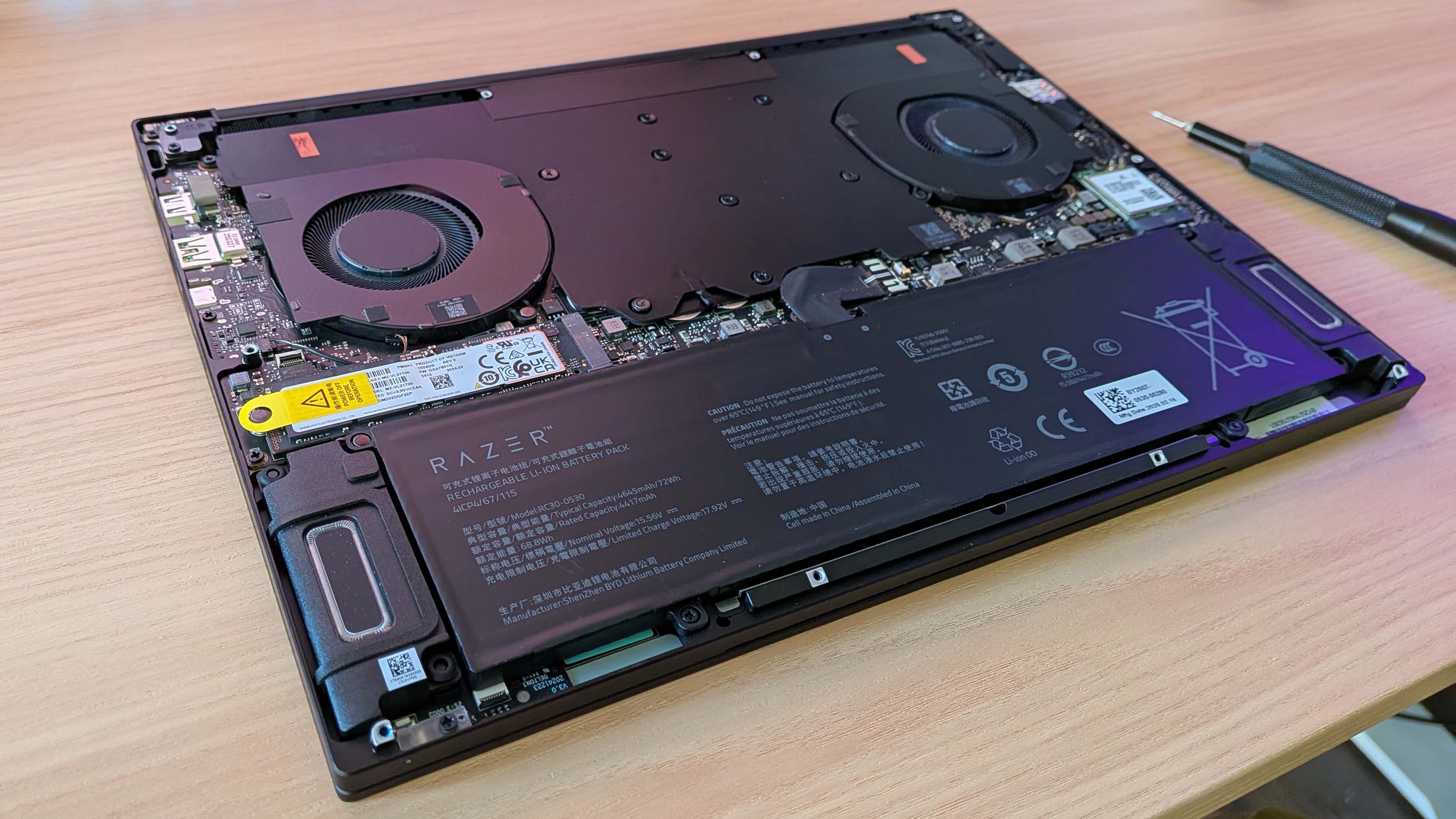
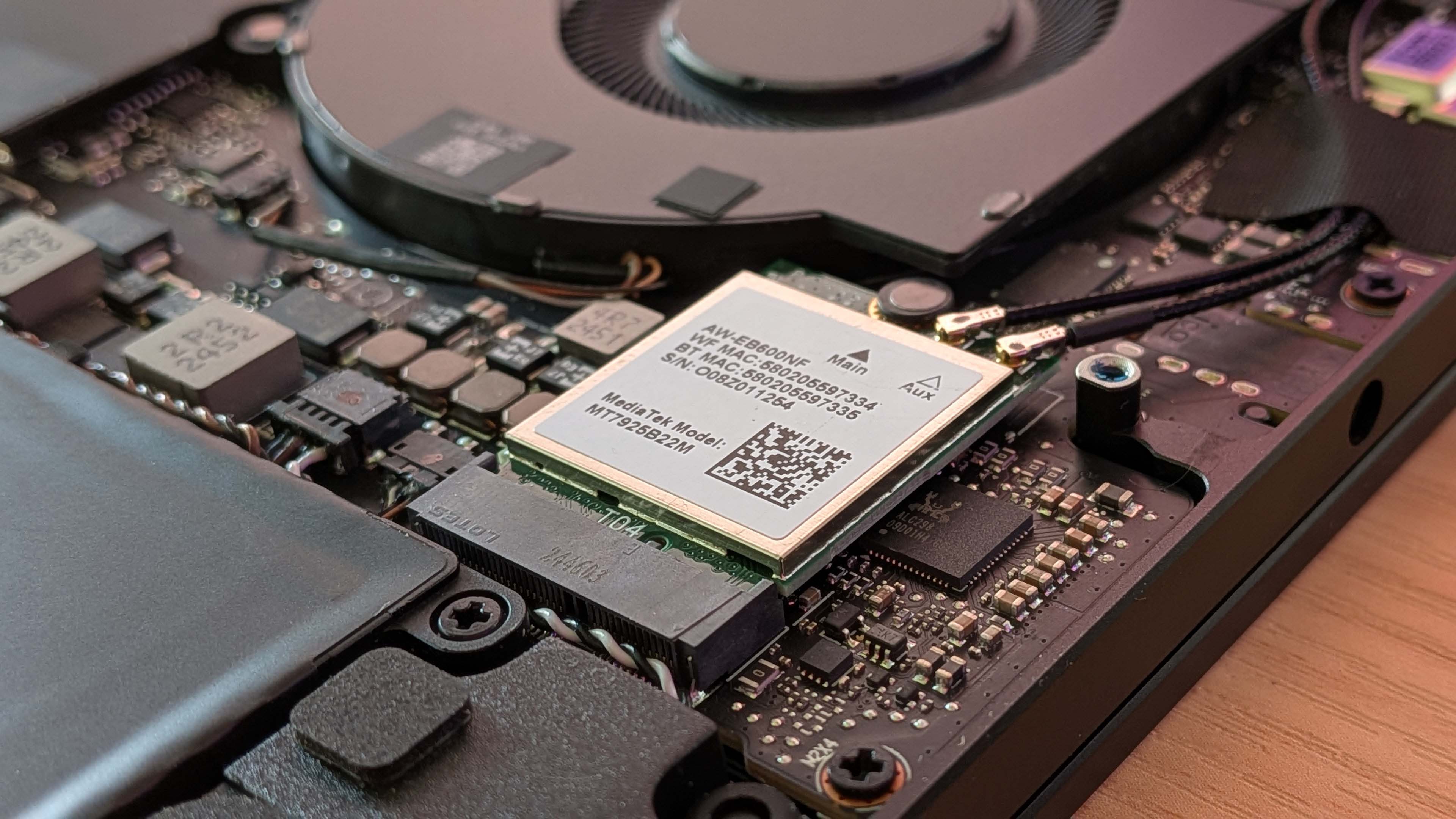
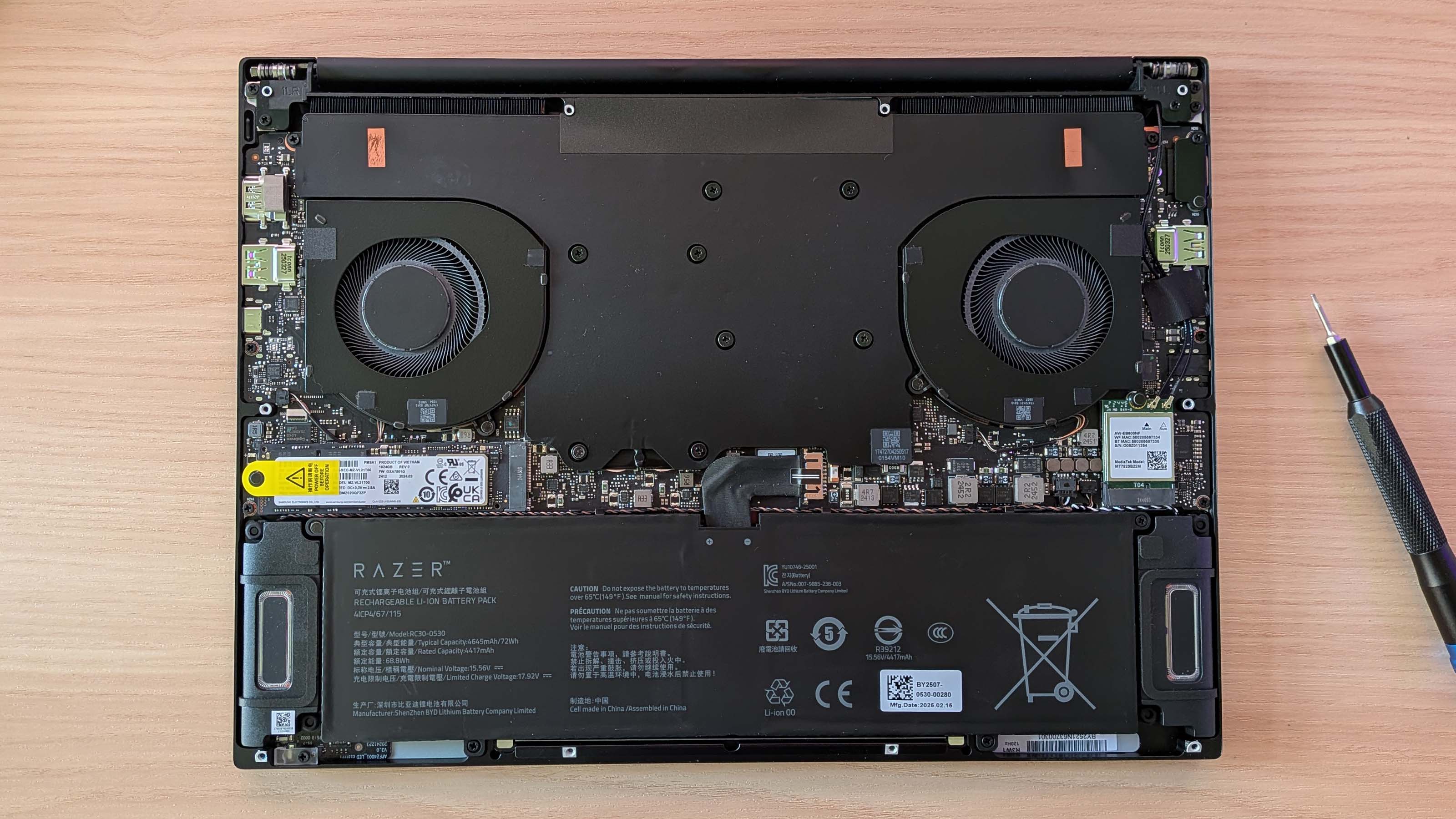
Specifications
Reasons to buy
Reasons to avoid
Our favorite config:
Razer Blade 14 (2025) | RTX 5070 | Ryzen AI 9 365 | 14-inch | 120 Hz OLED | 32 GB LPDDR5X-8000 | 1 TB SSD
Not only is this the exact spec we tested (and fell in love with), but Razer has been regularly carving the odd $200 off the price since its release. It's still not exactly cheap, but what you're getting is the most desirable 14-inch gaming machine we've ever had our hands on. With a 115 W RTX 5070 under the hood and a Strix Point Ryzen AI 9 365 handling the CPU duties, it's got plenty of grunt, although you might want to configure a 2 TB SSD to make it even more Tardis-like.
✅ You want the most refined gaming laptop money can buy: The Razer Blade 16 is also a lesson in absolute gaming laptop refinement, but squeezing the recipe down to a 14-inch form factor means the Blade 14 is even easier to take on the move.
✅ You care about experience, not raw performance: While you'll need the help of Nvidia's DLSS and MFG tech to make the most of the 1800p OLED display, what you get here is a laptop that keeps its cool (and quiet) while gaming under duress—and the AI tools work well for keeping your frame rate high and your experience smooth.
❌ You're on a budget: The Razer Blade 14 is not cheap, and while it regularly goes on discount, you can buy more powerful hardware in this form factor for less.
❌ You must have the very fastest 14-inch machine: The Blade 14 is a long, long way from slow, but you can buy 14-inch laptops with more grunt. The problem is, you end up paying for it in other ways, too.
💻 The Razer Blade 14 has some stiff competition to beat in the form of the Asus ROG Zephyrus G14, but this round has to go to the snake-emblazoned little lappy. It might not have a top-tier GPU, but its 115 W RTX 5070 still makes for a mean gaming machine, and it comes with a screen and chassis design that makes it truly desirable. It's captured our hearts, and it's the one we want in our backpacks every time we hit the road.
It wasn't long ago that the Asus ROG Zephyrus G14 sat at the top of this guide, but no longer. The Razer Blade 14 (2025) has reclaimed its crown as the best 14-inch gaming laptop overall, and that's thanks to a beautifully-weighted balance of refined design, choice components, and a desirability factor that's simply off the charts.
The new Blade 14 has been slimmed down once again, which is a remarkable achievement given that it was a teeny tiny gaming laptop to begin with. It's a sharpened, honed-feeling machine that simply looks and feels a step above the competition, which is all important when you're going to be slipping it in your bag on the regular and taking it wherever you go. At just 1.63 kg / 3.59 lbs soaking wet (okay, don't get it wet), this laptop slips in an over-shoulder bag without a second thought.
The ROG Zephyrus G14 (2025) provides some stiff competition, though, given that you can pack up to an RTX 5080 inside its similarly-svelte frame. In fact, you can buy an RTX 5070 Ti-equipped G14 for almost the same money as the top-spec, RTX 5070 Blade 14. So why have we opted for the Razer instead?
Simply put, it comes down to day-to-day useability, desirability, and for lack of a better word, table manners. The new G14 is a hot-running, noisy beast, with a set of fans that love to shift around in pitch in irritating ways—and that's only going to be made worse the bigger the GPU you cram inside it.
The RTX 5070 in the top spec Blade 14 we reviewed, though, alongside its Ryzen AI 9 365 CPU, feels like a real sweet spot. This lappy doesn't sound like a jet under load, has very respectable battery life, and feels refined under daily usage. That's super important with a 14-inch machine, as really what you're after is more than a gaming laptop—it's a companion, a best mate to bring with you to the office, your next trip, and maybe even to your relative's house for the holiday season.
Yep, you need to go and "get some work done" while everyone else argues politics across the dinner table. We see you. We understand. The Blade 14 is the machine you'll want to pull from your bag.
Plus, with the twin helping hands of DLSS 4 and Multi Frame Generation, it can really make the most of its 1800p 120 Hz OLED display. That's a lot of pixels to push for a mobile GPU, but if you're prepared to engage the AI doohickeys (and you really should), the Razer will happily carve through demanding games with aplomb. It's a gorgeous OLED panel to behold, too, which means (beyond the obvious benefits for gaming) watching a movie in an airport lounge or tweaking a spreadsheet on the train has never looked so good.
Pure native gaming performance isn't super quick, but then that's the case with just about all demanding games running on mobile machines this generation. It's a brave new world and all that, but at least the RTX 50-series GPUs can take advantage of the latest frame-boosting tech to keep your games running smooth and looking great. And although 14-inch gaming laptops equipped with the RTX 5070 Ti or RTX 5080 might be able to pump out a few more frames, the RTX 5070 does an admirable job—and it's the GPU that feels best suited to this form factor.
The Razer Blade 14 is a 14-inch gaming laptop that simply feels ahead of the competition, even if others are slightly quicker. It's a balanced, sharpened, hyper-refined portable gaming machine that feels ahead of the pack in all the ways that matter, and that's why it's our top 14-inch gaming laptop overall. It's the one we'd buy with our own cash, and the one you should have at the top of your shopping list, too.
Read our full Razer Blade 14 review.
The best value 14-inch gaming laptop
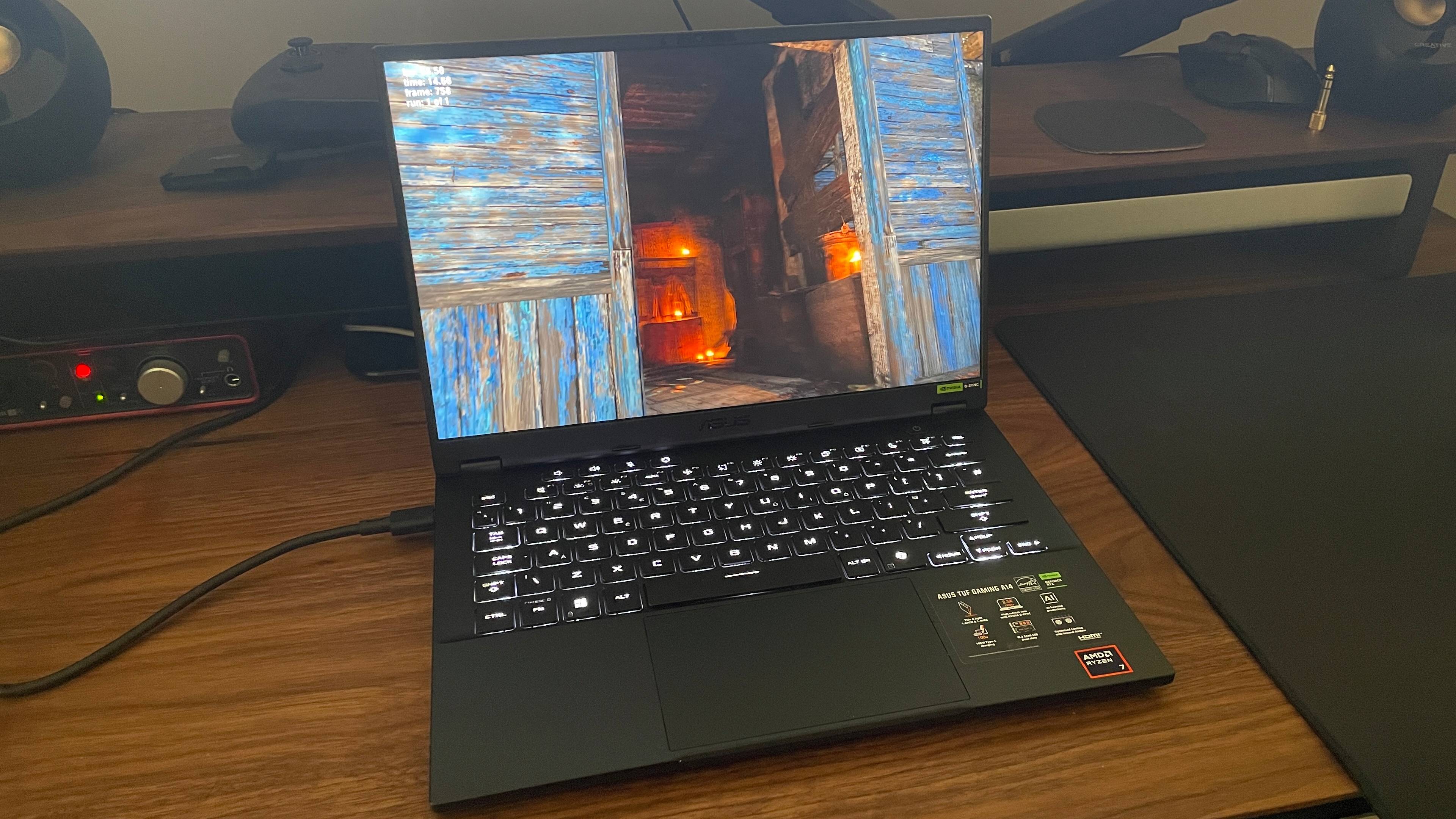

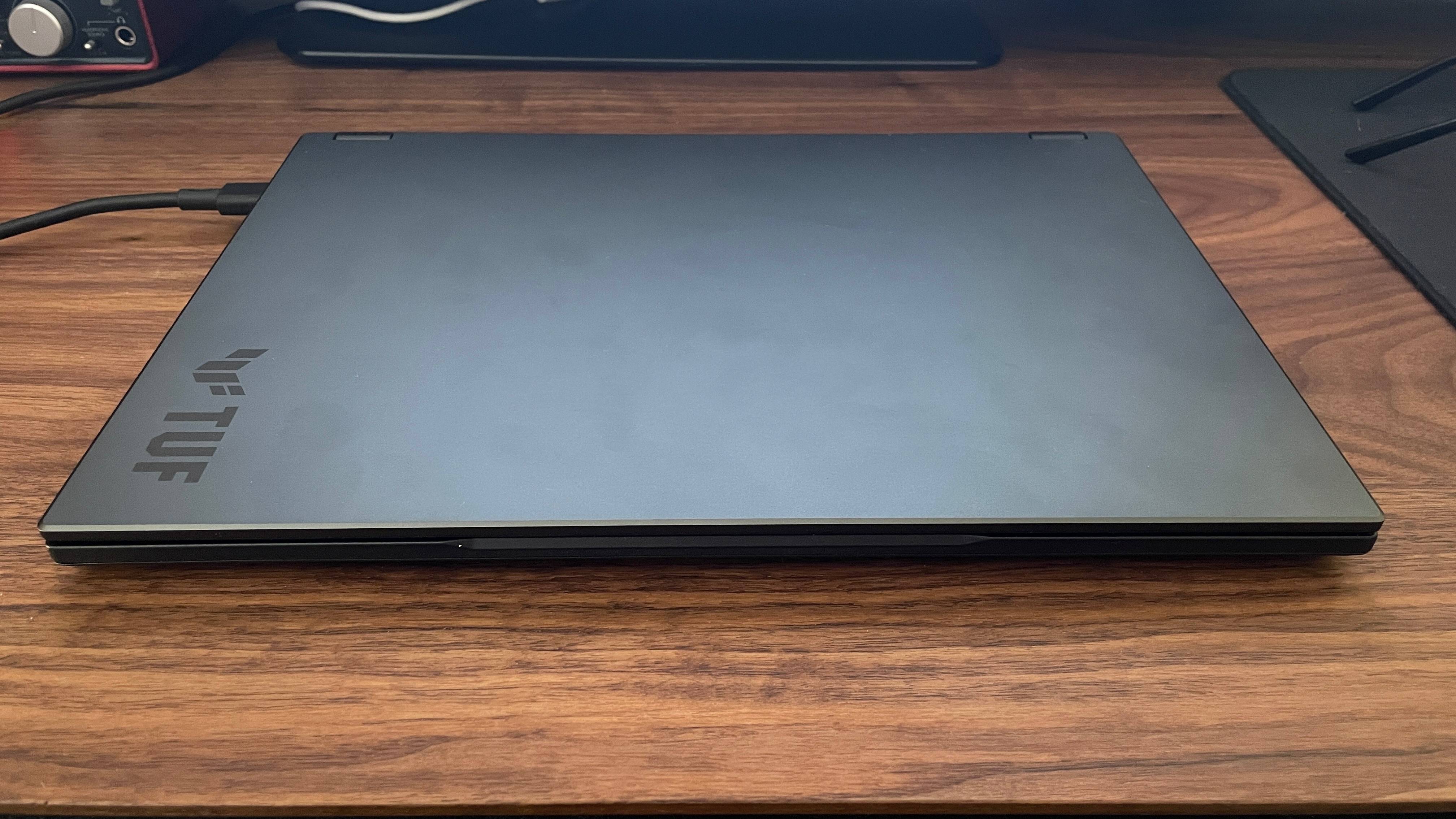
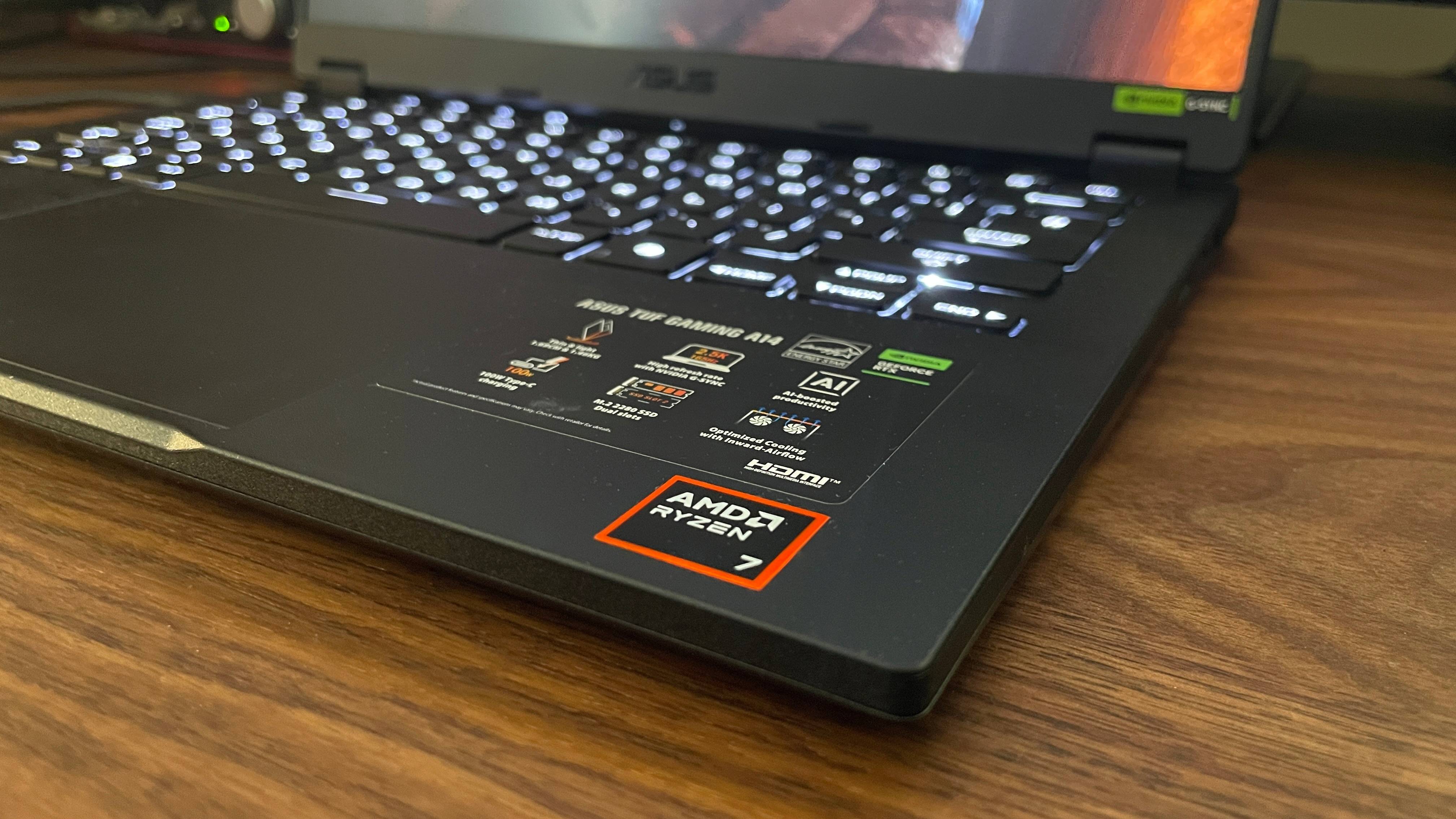
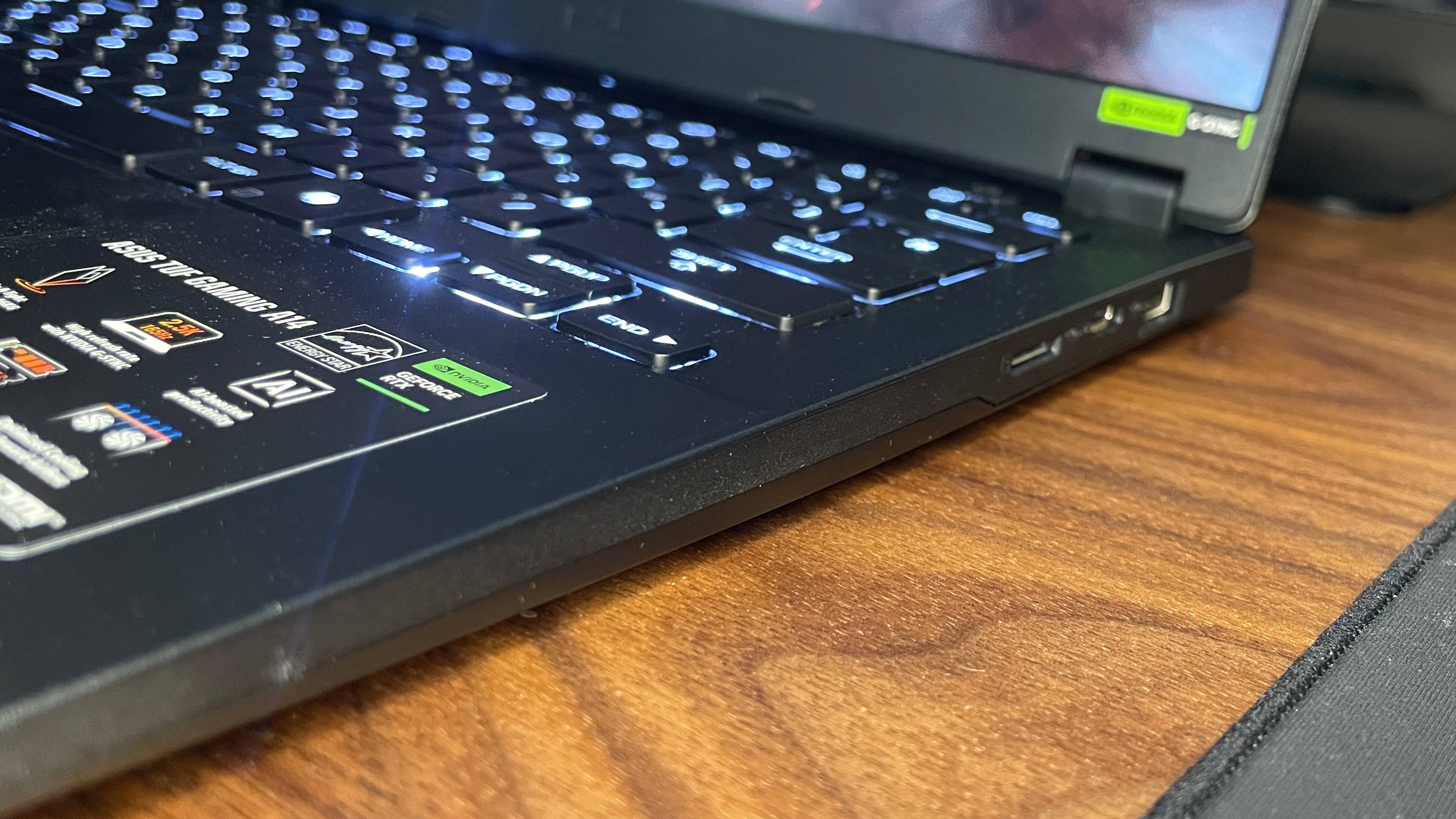
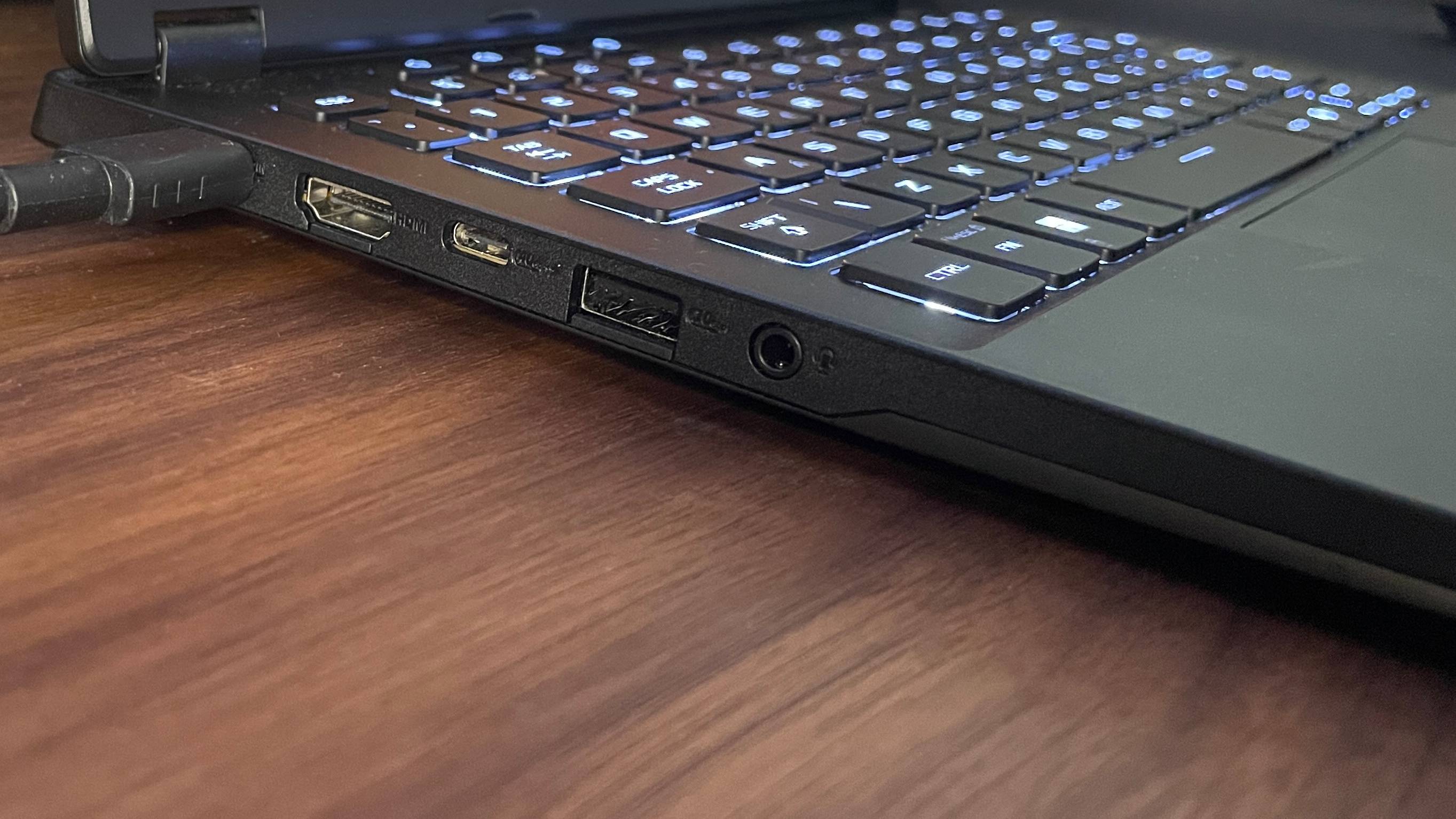

Specifications
Reasons to buy
Reasons to avoid
Our favorite config:
Asus TUF A14 (2025) | Ryzen AI 9 HX 350 | RTX 5060 | 16 GB LPDDR5X-7500 | 1 TB SSD
While the TUF A14's specs might look relatively modest on paper, they come together to create an excellent value little gaming machine. Sure, you're paying a premium over some 16-inch laptops for the smaller form factor, but the TUF is a delight to use at this spec, and capable of delivering surprisingly good gaming performance thanks to Frame Gen combined with the 105 W RTX 5060.
✅ You're looking for bang for your buck: 14-inch gaming laptops can be pricey, but the little Asus manages to cram some good components into a tiny frame for a very reasonable sum.
✅ You want good battery life: Two and a half hours of gaming without being plugged into the wall is very good going, and that translates into excellent battery life for day-to-day usage, too.
❌ You want top performance: The TUF A14 punches hard for its price point, but the Razer Blade 14 above will beat it without breaking a sweat—for a fair bit more cash, naturally.
❌ You're sensitive to fan noise: To get the most out of this machine, you'll want to set it to Turbo mode, and the fan noise will rise significantly in response.
💻 While the Asus TUF A14 2025 isn't the cheapest gaming laptop you can buy, what it provides for the cash is very impressive. Squeezing a bunch of good components into a 14-inch frame for reasonable money is no easy feat, and this little lappy makes for an excellent value proposition for those who can't stretch to the Razer above.
If you thought you'd have to pay a premium for good gaming components in a small form factor chassis, well, on the whole, you'd often be right. But the 14-inch Asus TUF A15 (2025) is cheaper than most, well-designed, equipped with some excellent components, and a delight to game on—which makes it our best value 14-inch gaming laptop pick.
Our Jacob Fox was so taken with this particular machine he said he "wouldn't swap it out for a single other laptop", although for what it's worth, I'd take the Razer Blade 14 above if one was going spare. Still, the Razer is a lot of money, whereas the TUF A14 can be found in RTX 5060-equipped trim for around $1,700, which is pretty good going in the current market.
And it's really, really good going when you see what it's capable of. Sure, the RTX 5060 isn't the most exciting of mobile GPUs, but at least here its been allowed to eat, what with its 105 W TGP. Many 14-inch machines limit power to even entry-level mobile GPUs, often reducing them to 80 W or less, but the mobile RTX 5060 here is allowed to do good work, which makes for a pleasant gaming experience.
Sure, you'll still need to enable some DLSS and MFG help for smooth frame rates in demanding games at the display's 1600p resolution, but again, that's par for the course with mobile machines in 2025. This is a 14-inch gaming laptop with enough grunt to provide a good frame rate for Multi Frame Generation to do its work, although being a more entry-level GPU, you'll still have to watch the settings on occasion to prevent latency issues from rearing their ugly head.
It's not perfect, however. In order to get the most out of it, you'll be sticking it in Turbo mode in Asus Armory Crate, and like most laptops pushed to the limit, it can get pretty loud. Back it down to Performance and it still performs well, but takes the edge off of those fans. Something to bear in mind, at least.
Of course, you could switch to the internal Radeon 860M iGPU for quieter gaming, which won't provide anywhere near the grunt of the RTX 5060, but is still useable for 1200p gaming on the go. Speaking of being on the move, the battery life is genuinely impressive, managing a full two hours 30 minutes while crunching away in the PCMark 10 gaming battery life benchmark. This translates to excellent battery life for day-to-day tasks, too, making the TUF A14 a properly portable proposition.
It's not the best productivity performer, it must be said. The Ryzen AI 7 350 is a perfectly decent productivity CPU, but it gets its lunch eaten by more multi-cored models. Still, unless you're planning on doing some seriously heavy CPU-crunching tasks, I doubt you'll mind all that much, and it's still a great-performing chip overall.
All of which, wrapped up in a smart brushed metal chassis that's a big improvement on older models of yore, makes for a very attractive little gaming machine. It won't be breaking any performance records, but the TUF A14 proves that you can buy a great 14-inch gaming laptop for reasonable cash these days, and that makes it a shoo-in for the best value spot.
Read our full Asus TUF A14 (2025) review.
The best thin and light 14-inch gaming laptop
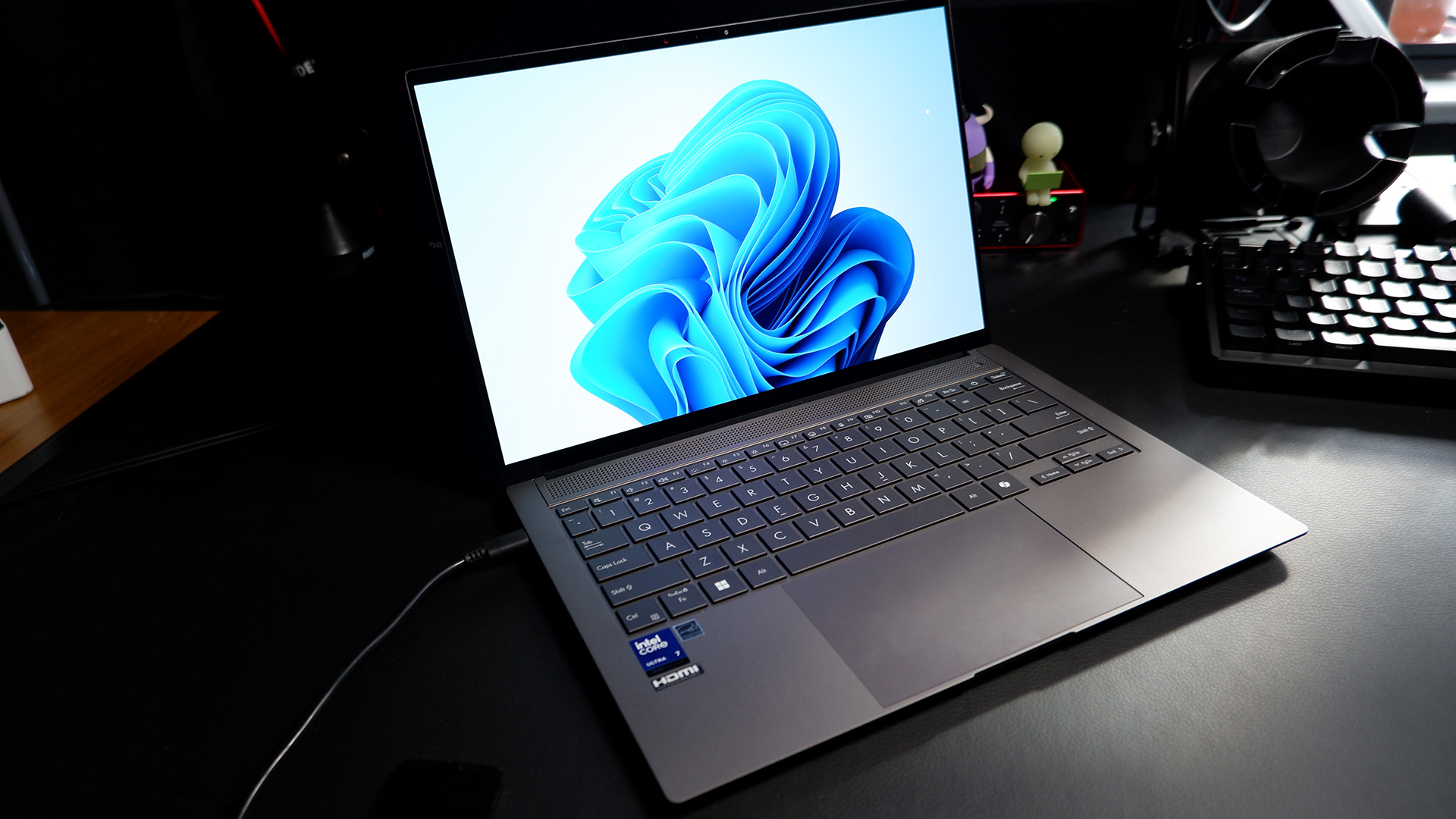
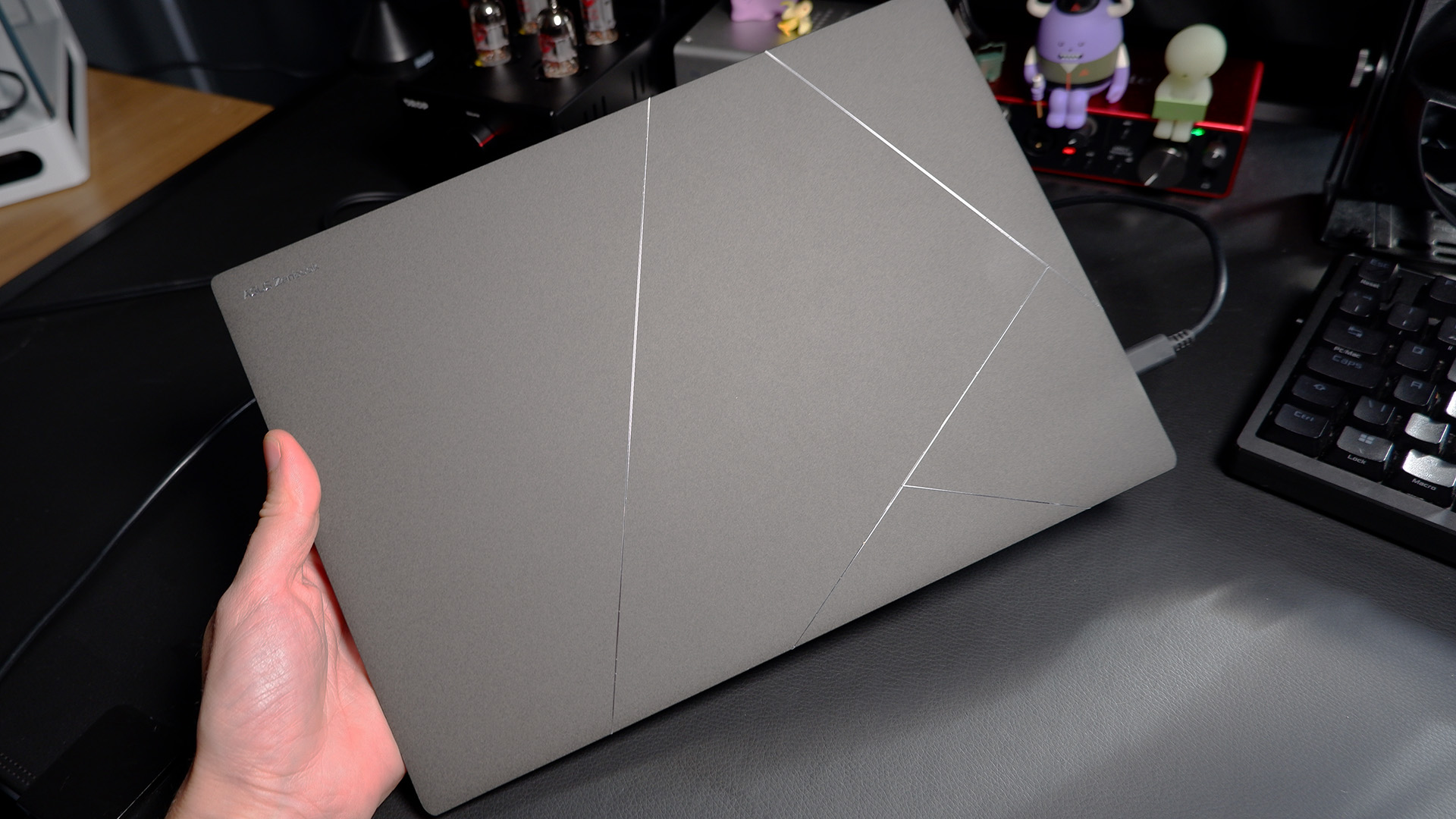
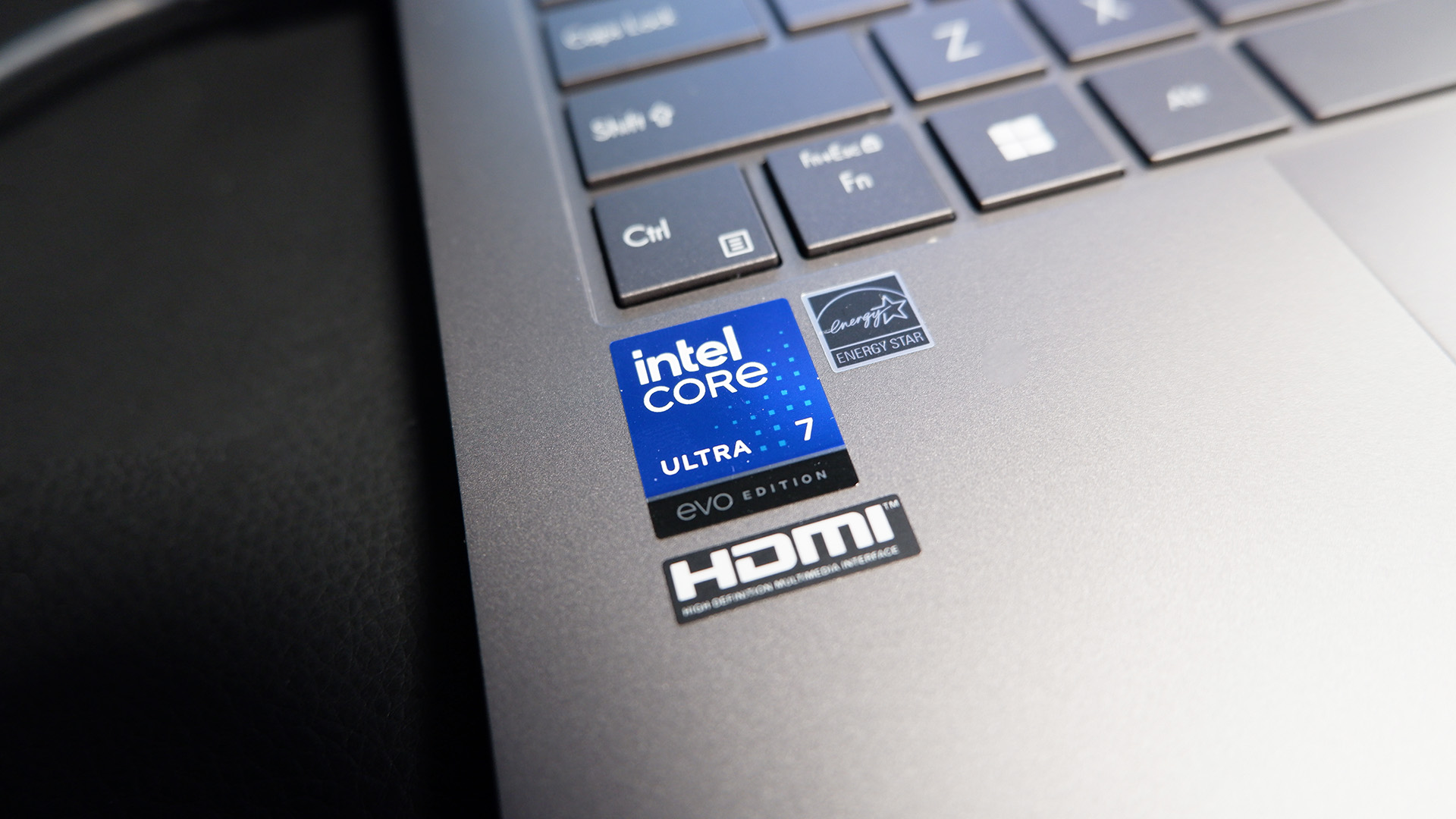
Specifications
Reasons to buy
Reasons to avoid
Our favorite config:
Asus Zenbook S 14 | Intel Core Ultra 7 258 V | Integrated Arc 140V | 32 GB LPDDR5X-8533 | 1 TB SSD
If you want to go really, really thin, and really, really light, then unfortunately you'll have to ditch the discrete GPU. The good news, however, is that Intel's Lunar Lake chips deliver surprisingly reasonable gaming performance these days, as long as you're not expecting 60 fps+ with the settings turned up in demanding games. This little cutie is perhaps best thought of as the ultimate travel machine, with the capability for some light gaming on the side—but it's very well-specced all round for a productivity muncher.
✅ Absolute portability is a must: The Asus Zenbook S 14 is so thin and light, you might just forget you brought it with you at all.
✅ You're only looking for light gaming performance: Demanding games are going to be too much for smooth frame rates with the iGPU-only setup here, but if your sort of gaming mainly equates to a spot of strategy, or some indie shenanigans, it'll do just fine.
❌ You want full-fat gaming laptop performance: The Intel Arc 140V iGPU is impressive for an integrated solution, but managing your expectations is important. Demanding games aren't going to run anywhere near as smoothly as the other options above—but you do get a huge amount of portability for your sacrifice.
💻 If all you want is something incredibly thin, light, and hyper-portable for less-demanding gaming duties, you'd do well to check out the Asus Zenbook S 14. It's not going to be trading blows with the proper, discrete-GPU-equipped contenders above, but for a bit of light gaming on the go, it's well worth a look.
I know what you're thinking already. What, no dedicated GPU? But the truth is, if you want the thinnest, lightest 14-inch laptop, you're going to have to make some compromises, and the compromise with the Asus Zenbook S 14 comes in the form of a distinct lack of dedicated graphics grunt.
What it does have, however, is a surprisingly good iGPU. Now, it's important to manage your expectations here, and tell you that this machine isn't going to be crunching out the same sort of frame rates as the beefy bois above. However, if all you want is some light, handheld-like gaming on the go from a laptop that's otherwise all business, this Lunar Lake-chipped Asus Zenbook S 14 should be under serious consideration.
The Intel Core Ultra 7 285V at the heart of this machine is a four Performance core, four Efficient chip with Intel's new Arc 140V iGPU inside, complete with 8 XE-cores of its very own. And while it's not going to be bothering a dedicated gaming GPU with its performance, it's got enough kick to make us stand up and take notice.
For a start, it's capable of occasionally beating the Strix Point-based AMD Ryzen AI 9 HX 370, and that's a chip that you'll find standing on its own in some of the fastest handheld gaming PCs we've ever tested. That translates to 33 fps in Cyberpunk 2077 at 1080p Medium settings, and while that sort of performance isn't going to set anyone's world on fire, it's pretty good going for an iGPU.
Again, we're talking handheld-like figures here, so don't expect it to give something like the mobile RTX 5060 in the Asus TUF A14 a run for its money. But if all you want to do is blast through some late night Civ 7 runs in an airport lounge, crank through the odd indie game in a hotel room, or get your strategy on with something less demanding on a flight, the Intel chip can likely handle that with aplomb.
And what you get in return, for your GPU sacrifice, is an astonishingly light, hyper-portable gaming laptop that's so easy to carry, you might forget you put it in your bag at all. It's got a lovely OLED screen, a ceramic aluminium finish that's simply divine, and a good keyboard with a large trackpad. Really, this is what we hope gaming laptops will be like in the future, once we've figured out how to cram a proper GPU into something this miniscule.
For the meantime, though, light gaming duties it is. But should the latest, ultra-demanding games be out of your wheelhouse, and you simply want something that can crunch the less-demanding stuff all day long, the Zenbook S 14 is well worth taking a long, hard look at.
Read our full performance testing of the Asus Zenbook S 14.
Also tested
Acer Nitro 14 | Ryzen 7 8845HS | RTX 4050 | 16 GB LPDDR5x | 500 GB SSD
A well-engineered device with far too many compromises. Even at almost half its retail price, I'd probably advise buying up and getting something with a better card.
PC Gamer score: 55%
Read our full Acer Nitro 14 review.
HP Omen Transcend | Core Ultra 7 155H | 16 GB LPDDR5x-7500 | 1 TB SSD
HP has made a really lovely little 14-inch gaming laptop and one that doesn't cost the earth, either. The OLED screen, the build quality, and the specs had me expecting a much higher price. But its specs and design also had me expecting more out of its battery, too.
PC Gamer score: 83%
Read the full HP Omen Transcend 14 review.
Asus ZenBook Duo OLED (2024) | Core Ultra 9 185H | Arc graphics | 32 GB LPDDR5x | 2 TB SSD
With twin OLED displays the ZenBook Duo is quite something, but with that unreliable Arc-integrated GPU inside it, you're going to struggle to get consistent gaming performance even at medium 1080p levels.
PC Gamer score: 75%
Read the full Asus ZenBook Duo OLED review.
Where to find the best gaming laptop deals
Where are the best gaming laptop deals?
In the US:
Amazon: Laptops from Acer and Dell starting at $650
Best Buy: Save up to $500 on gaming laptops
Walmart: Good budget gaming laptop deals
B&H Photo: Up to $500 off Lenovo, Asus, & MSI gaming laptops
Target: Sub-$1,000 gaming laptops
Staples: Up to $300 off MSI gaming notebooks
Lenovo: $1,000+ discounts on Legion laptops
Newegg: $500+ off RTX 30 series gaming laptops
Dell - Save over $300 on Dell and Alienware gaming laptops
In the UK:
Amazon: Save on Asus, Razer, and Acer gaming laptops
Dell: Alienware and Dell Gaming laptops with up to £500 off
HP: Save £450 on HP Omen laptop powered by an RTX 3070 Ti
Overclockers: Gaming laptop deals and components
Very: Save up to £450 on MSI gaming laptops
Scan: Up to £400 off gaming laptops from different manufactures
We regularly curate the best gaming laptop deals each week, so check out our updated deals hub for the latest offers. But here are also the places that we would generally be looking to find those deals for ourselves:
FAQ
What are the most important gaming laptop components?
When it comes to gaming, the obvious answer is the graphics card, but that's where things have gotten a little more complicated recently. With GPU performance now so dependent on cooling, you have to pay attention to what wattage a graphics card is limited to. We always make sure to point out the TGP (Total Graphics Power) of laptop GPUs wherever possible, so you can see which have been given more juice to play with than others.
You're also going to want a good CPU, a decent dose of RAM, and a good-sized SSD to store your games on. Still, it's the GPU that's going to make the biggest difference when it comes to gaming performance, so make sure to pick something with an appropriate amount of grunt.
Should I worry about what the CPU in a gaming laptop is?
That really depends on what you want to do with your laptop. As long as the CPU has at least six cores and 12 threads, and they're clocked high enough, it should be more than enough to deliver great gaming performance when paired a good GPU—although eight-core and up is a good benchmark to aim for when it comes to higher-end models.
Are high refresh rate panels worth it for laptops?
We love high refresh rate screens here, and while you cannot guarantee your RTX 5060 will deliver 240 fps in the latest games, you'll still see a benefit in the general look and feel of your machine with a 240 Hz display.
Keep up to date with the most important stories and the best deals, as picked by the PC Gamer team.

Dave has been gaming since the days of Zaxxon and Lady Bug on the Colecovision, and code books for the Commodore Vic 20 (Death Race 2000!). He built his first gaming PC at the tender age of 16, and finally finished bug-fixing the Cyrix-based system around a year later. When he dropped it out of the window. He first started writing for Official PlayStation Magazine and Xbox World many decades ago, then moved onto PC Format full-time, then PC Gamer, TechRadar, and T3 among others. Now he's back, writing about the nightmarish graphics card market, CPUs with more cores than sense, gaming laptops hotter than the sun, and SSDs more capacious than a Cybertruck.
